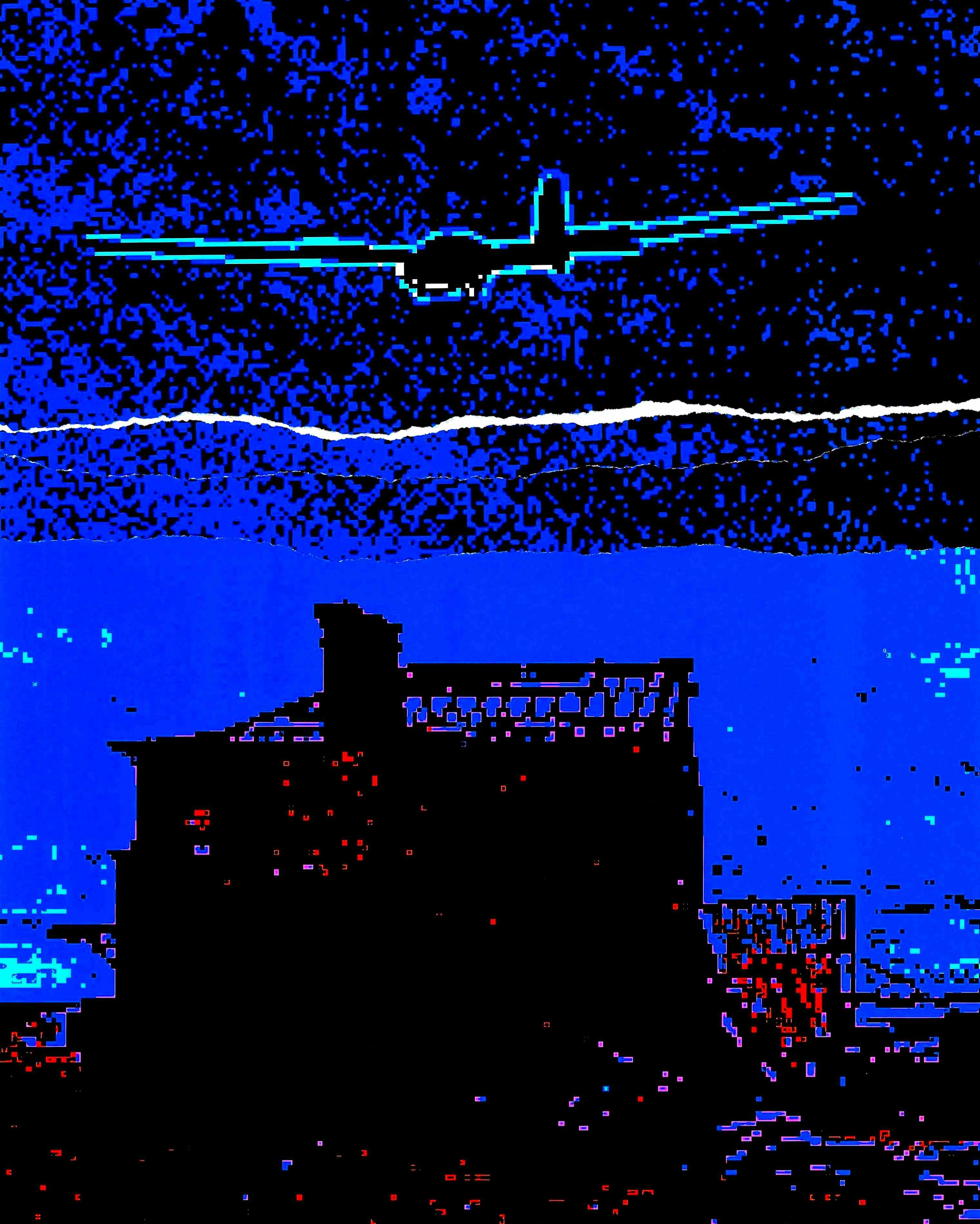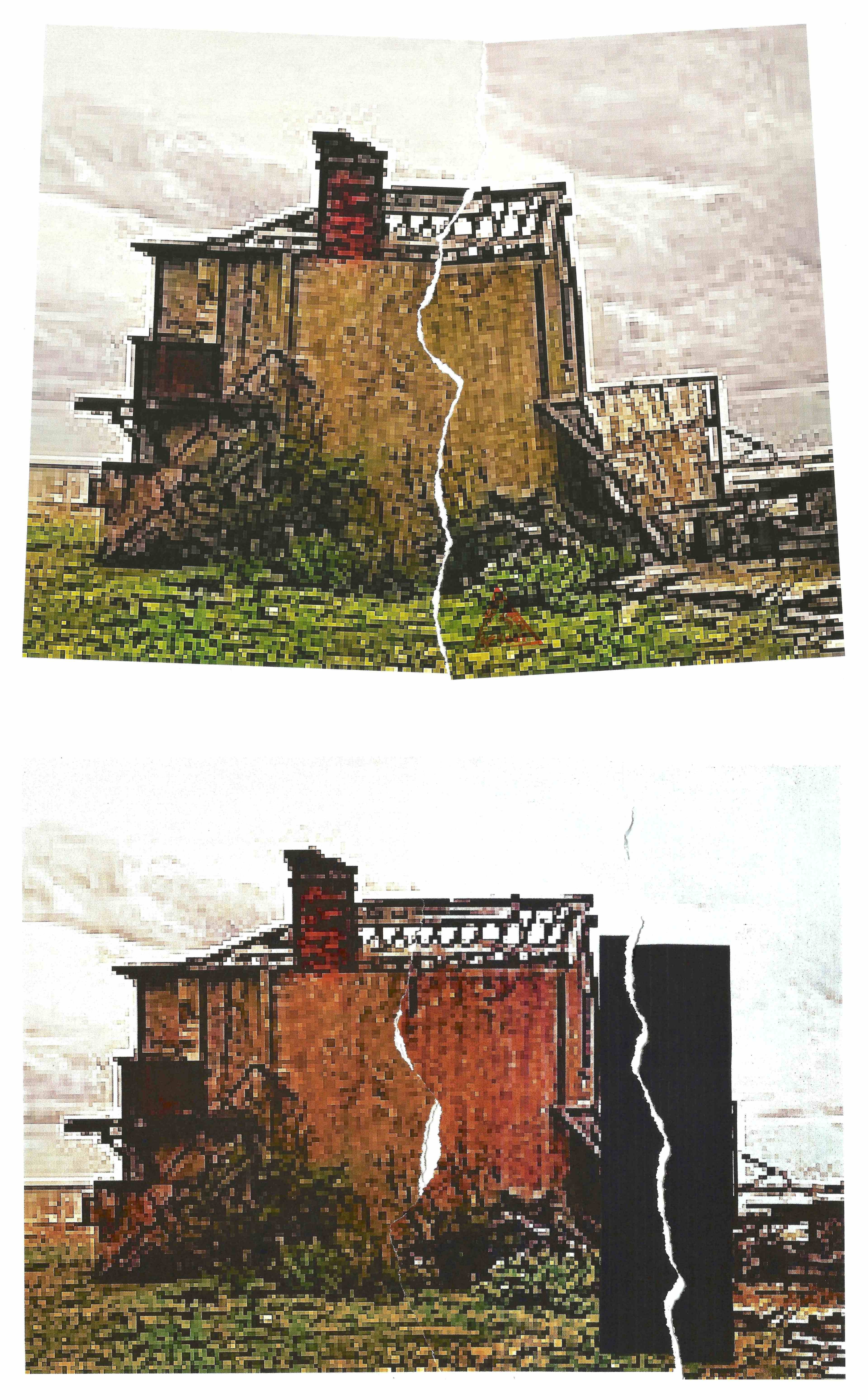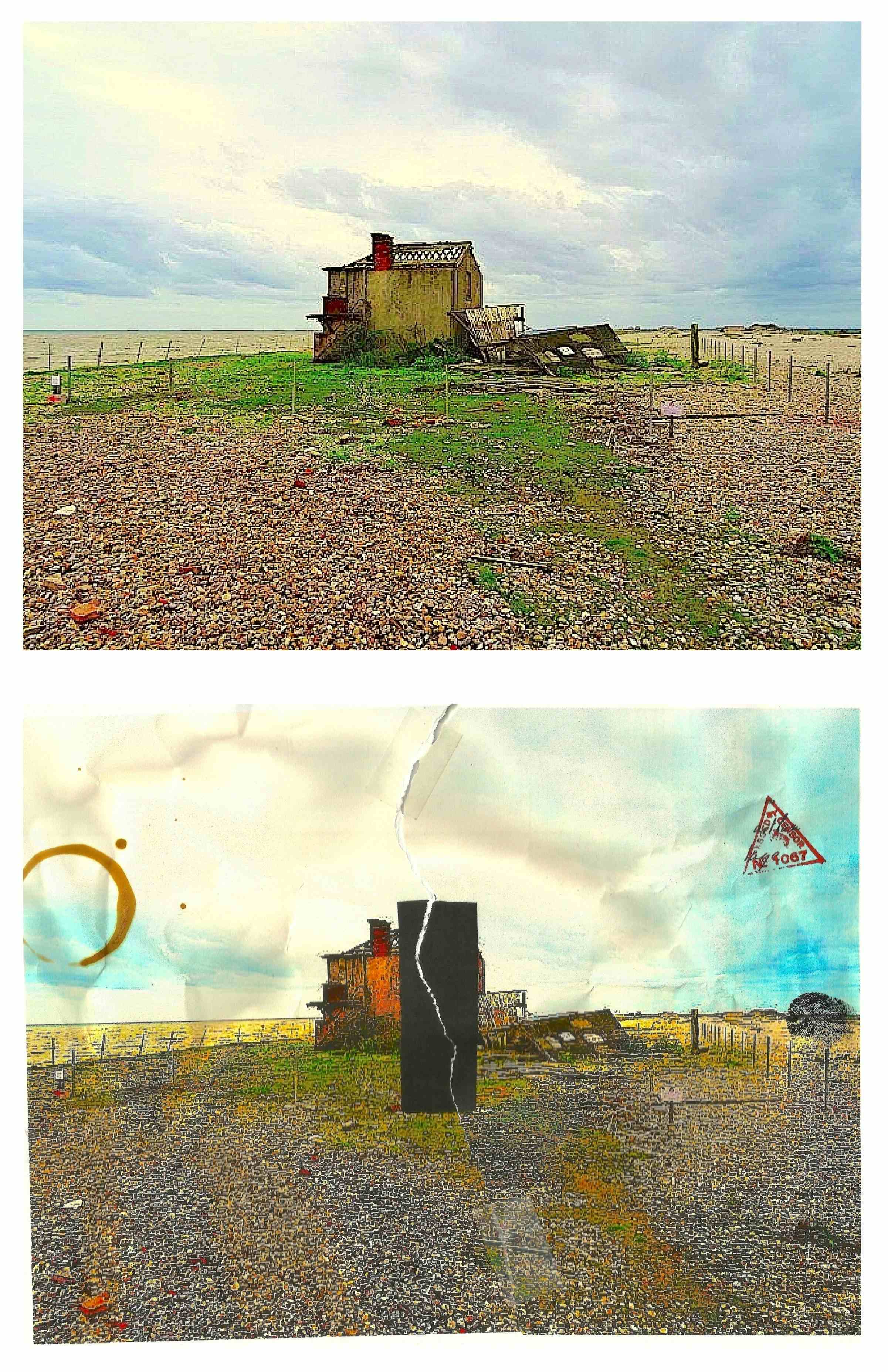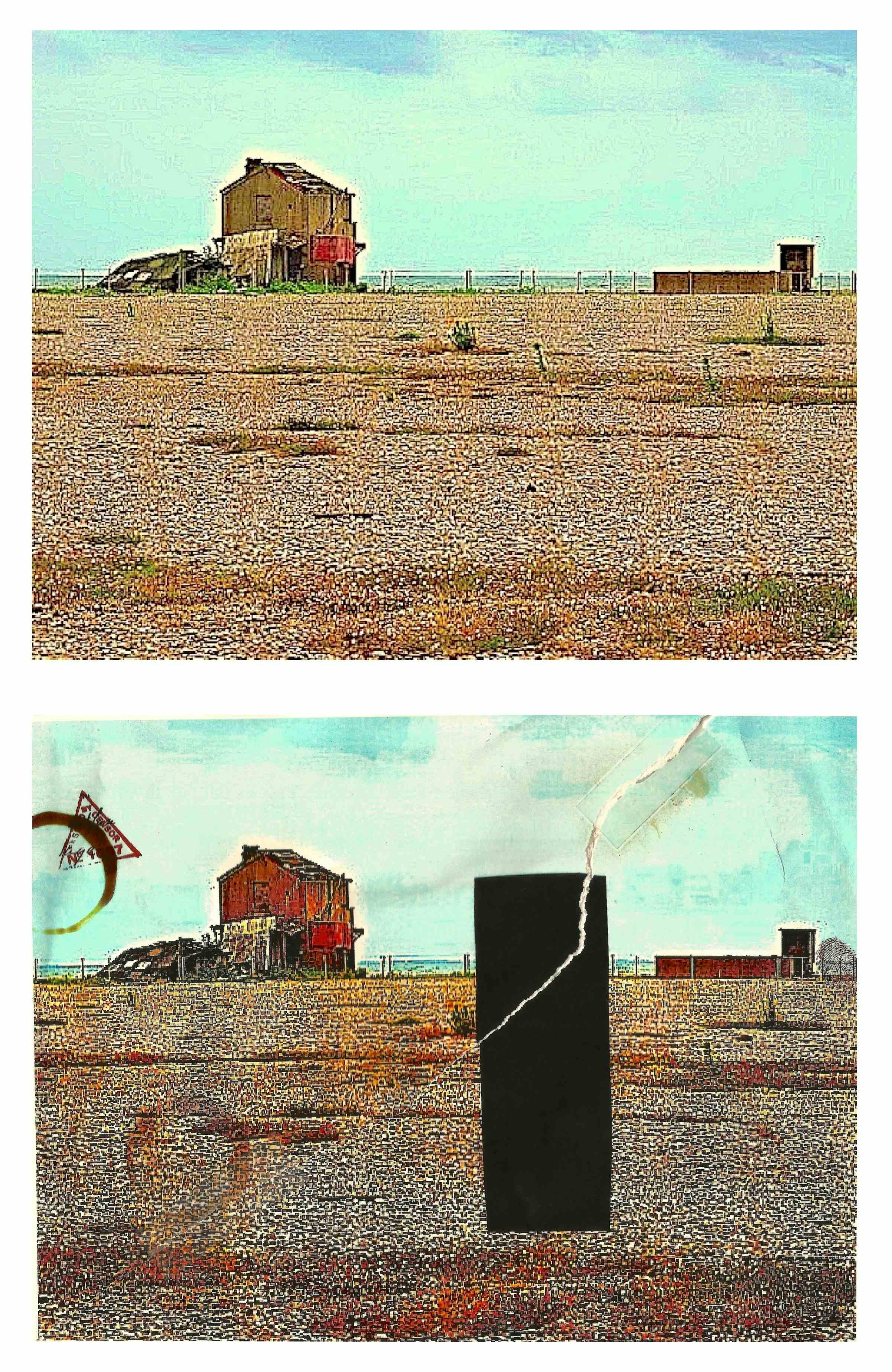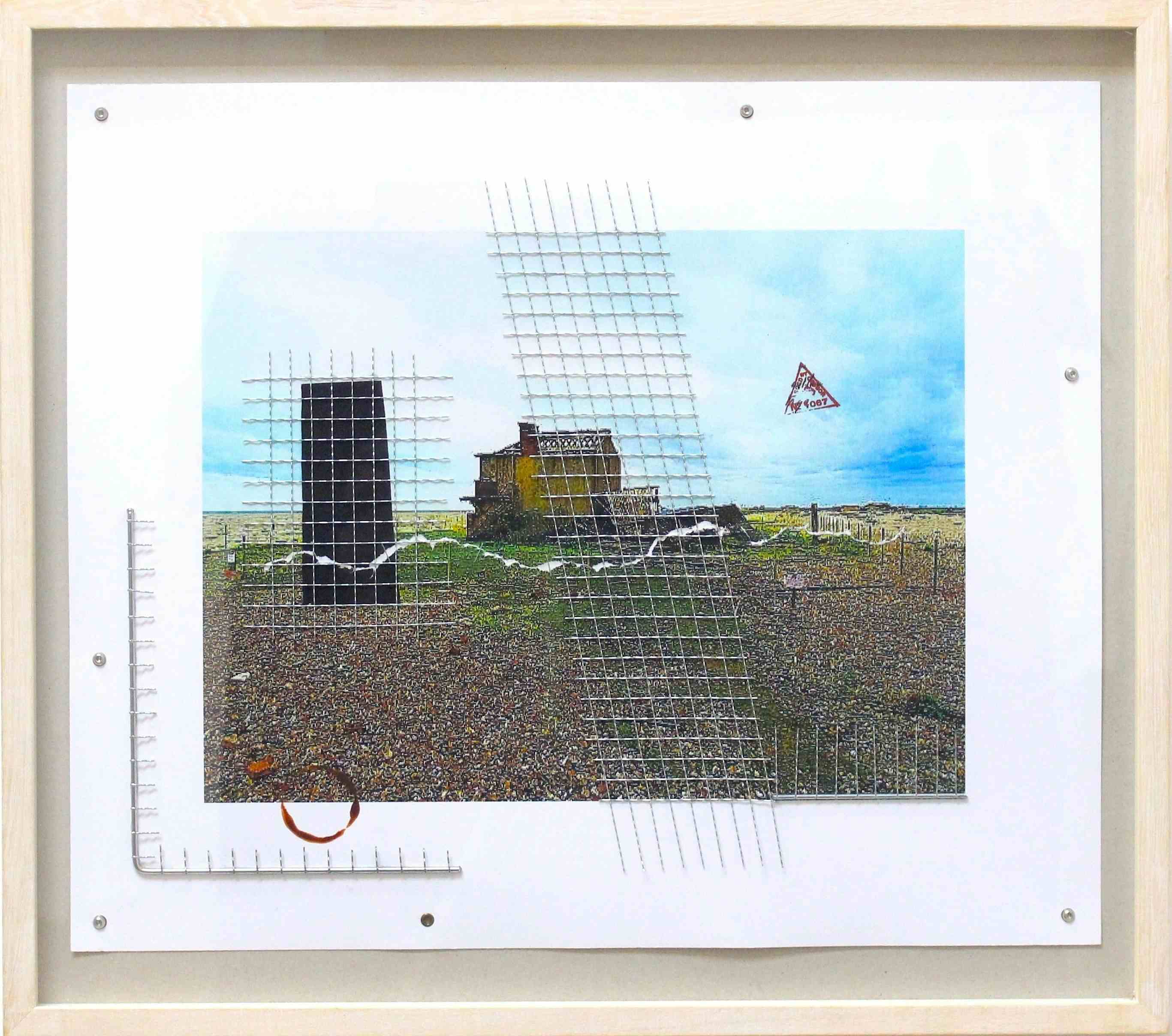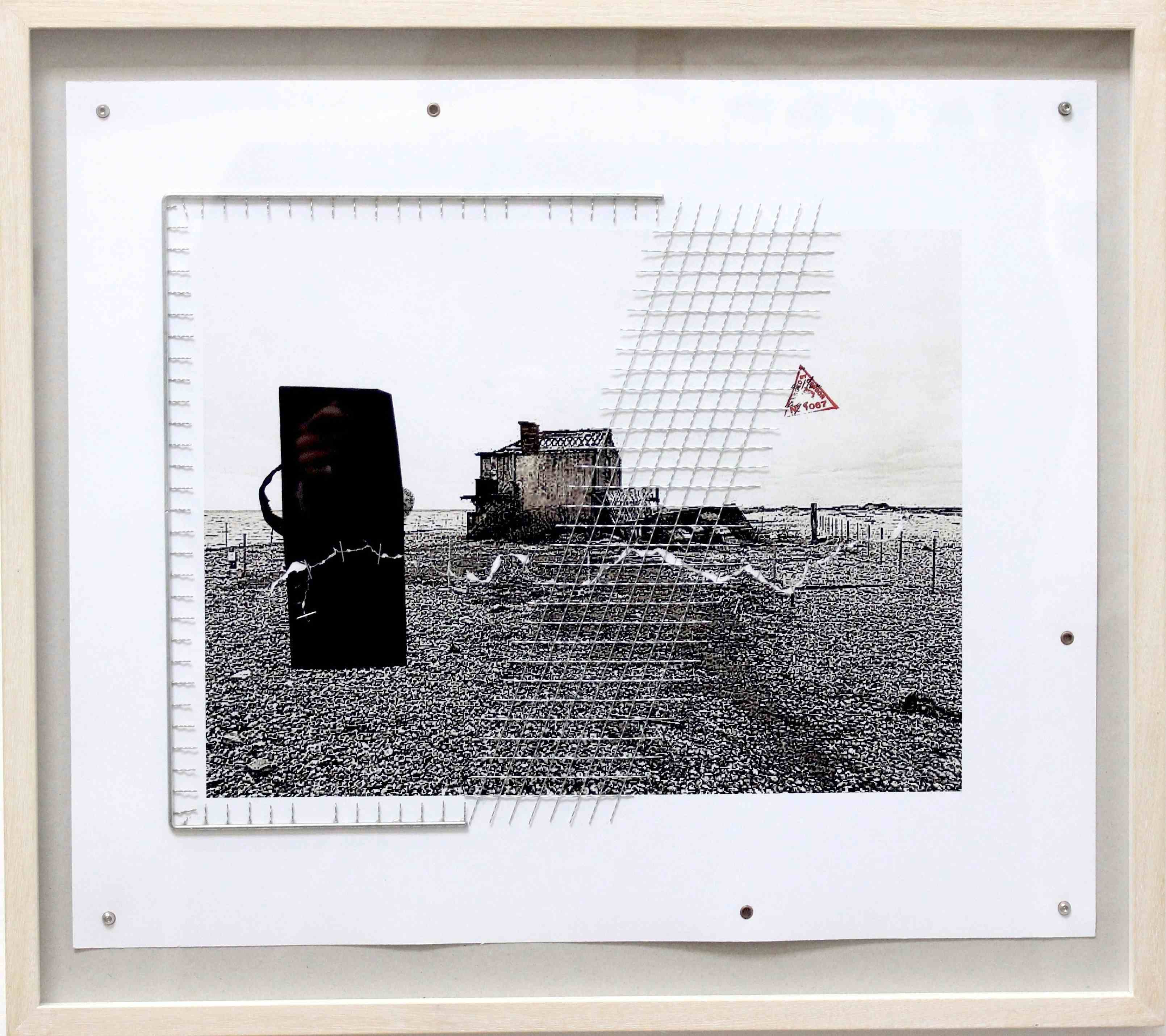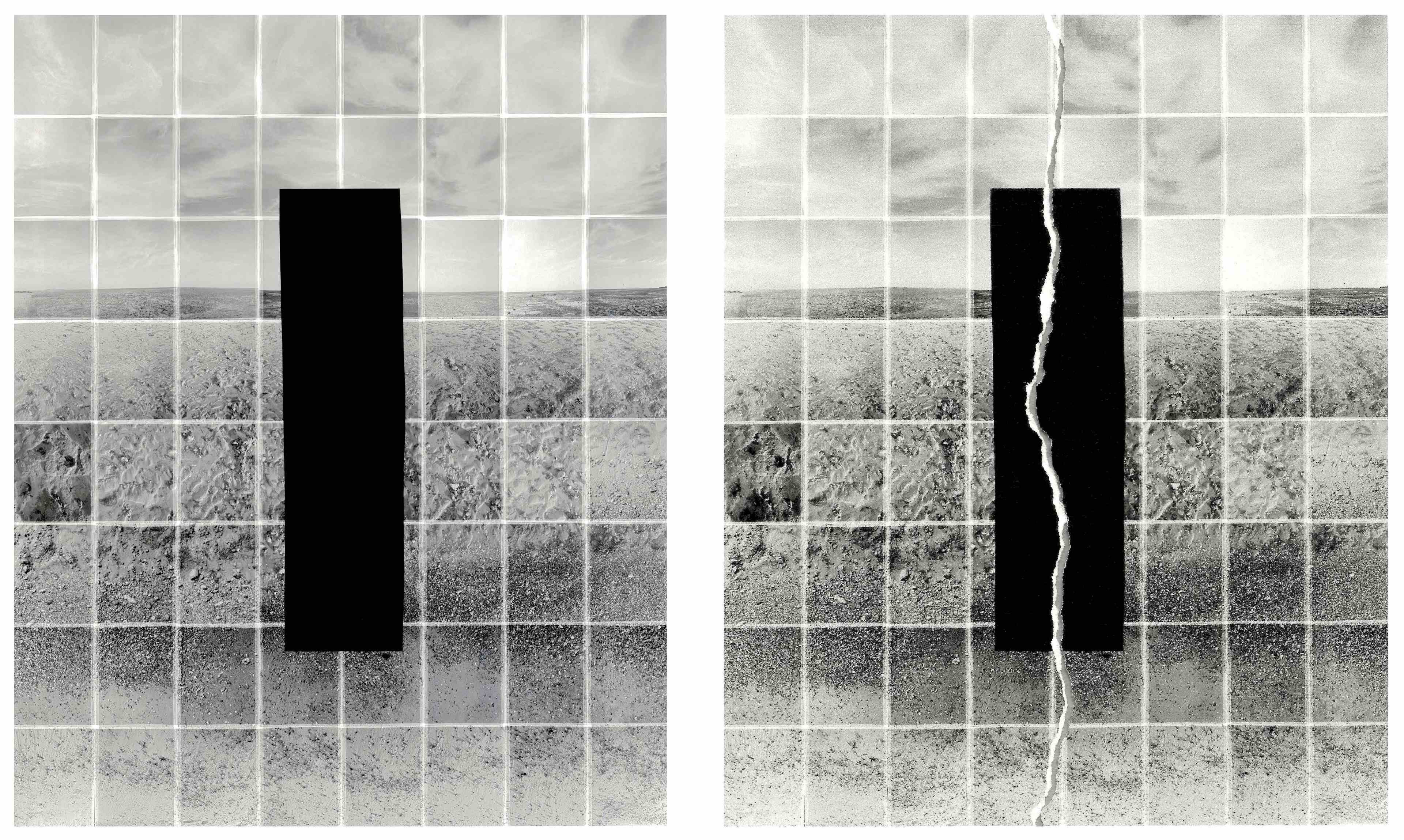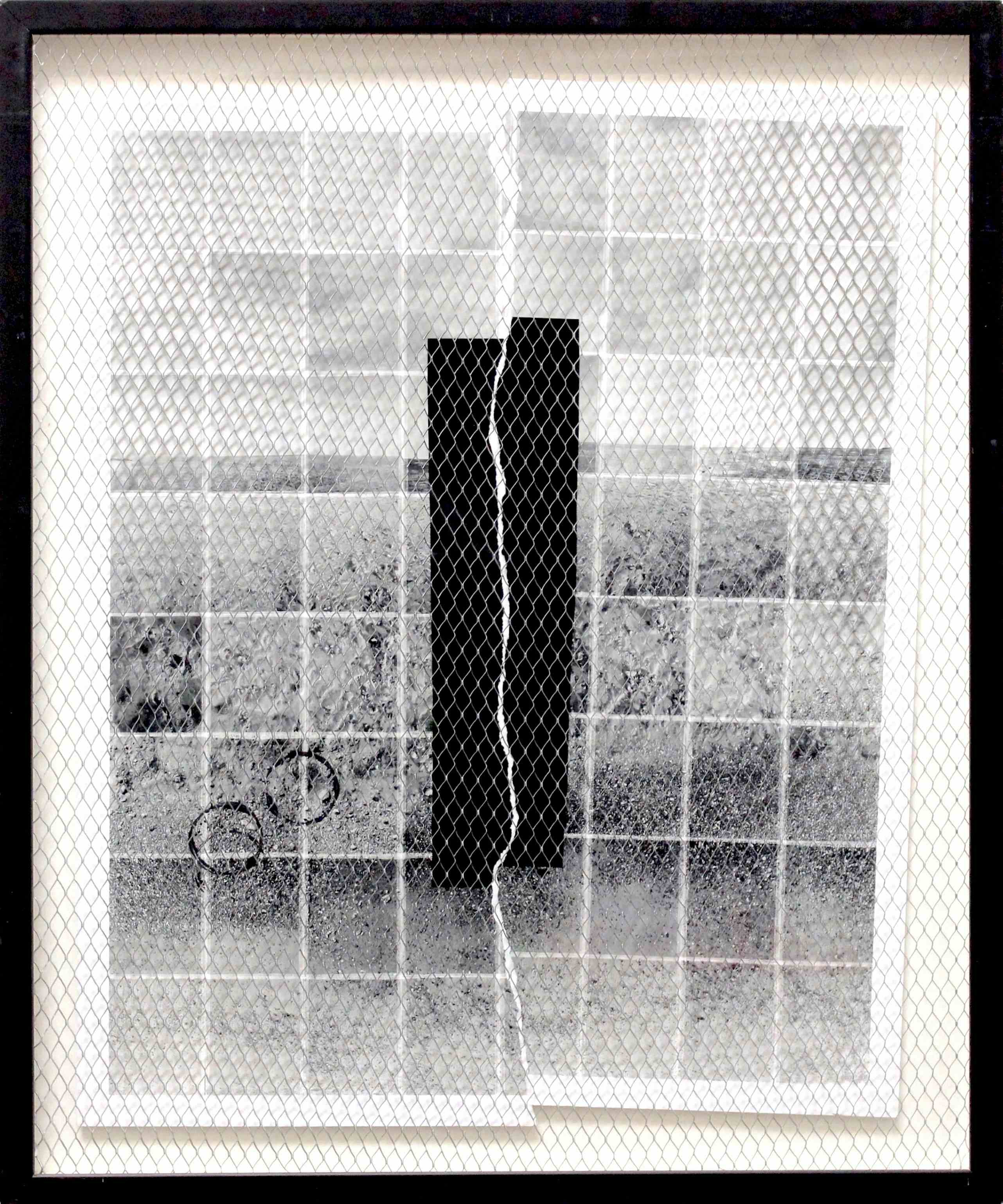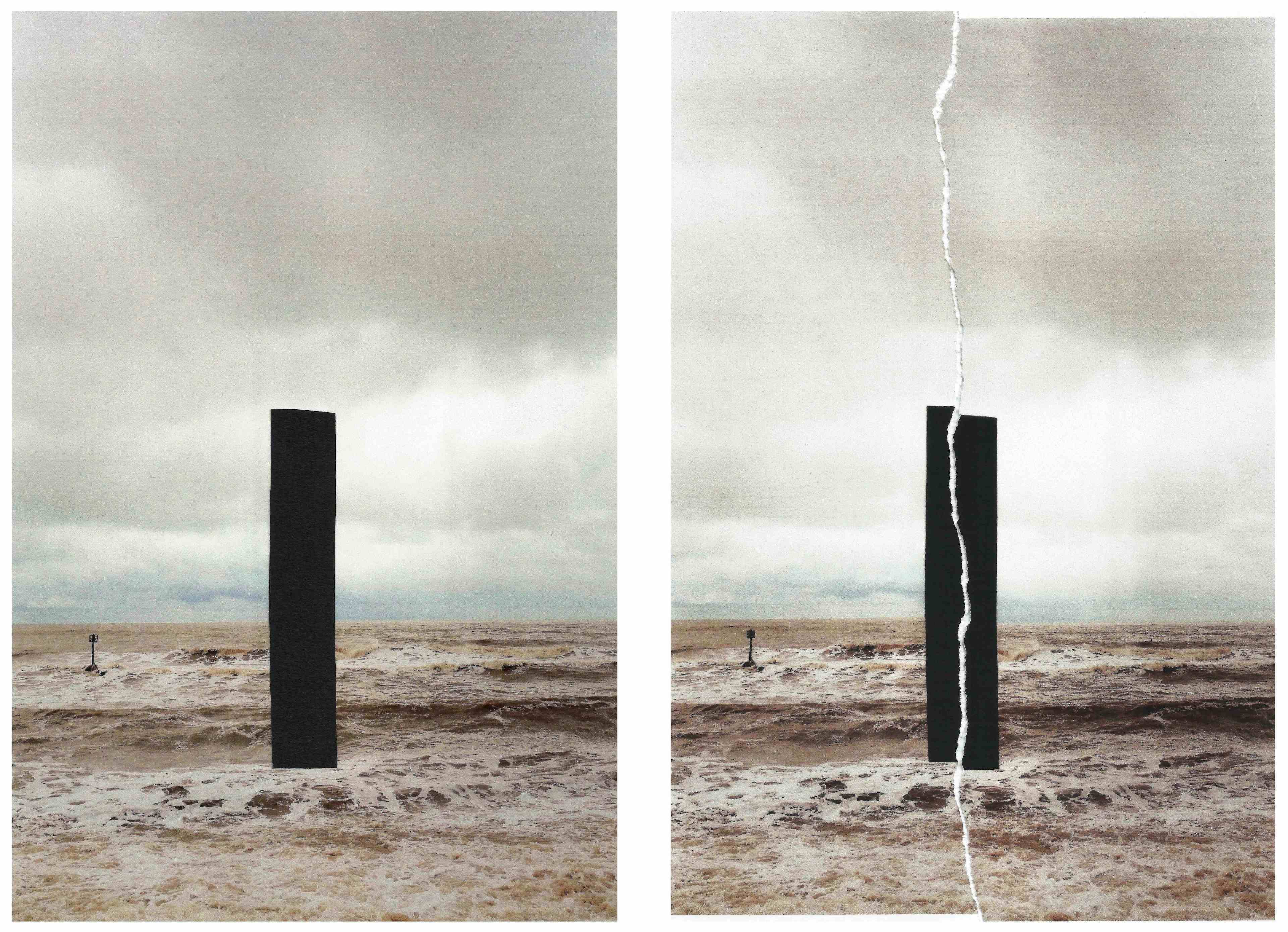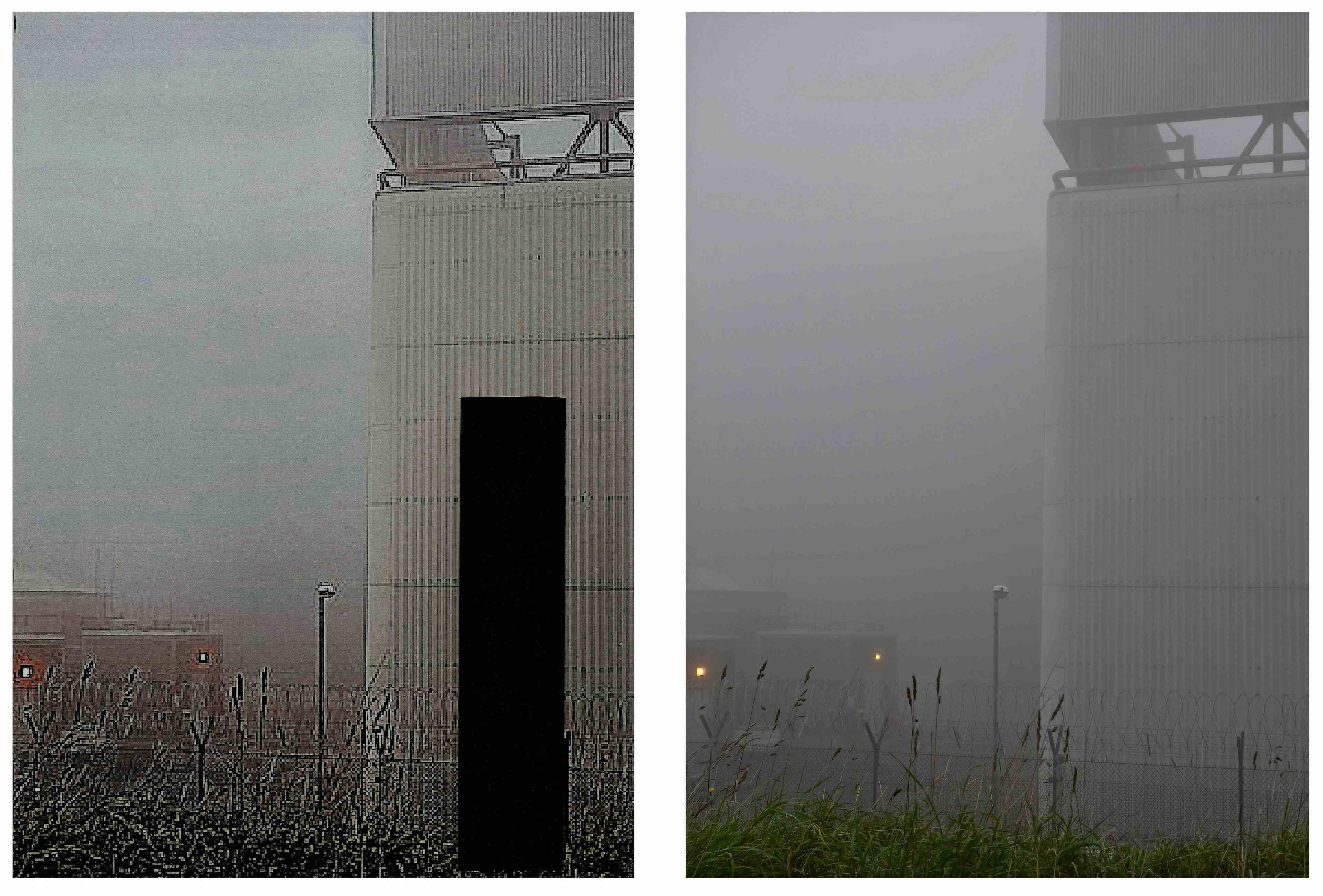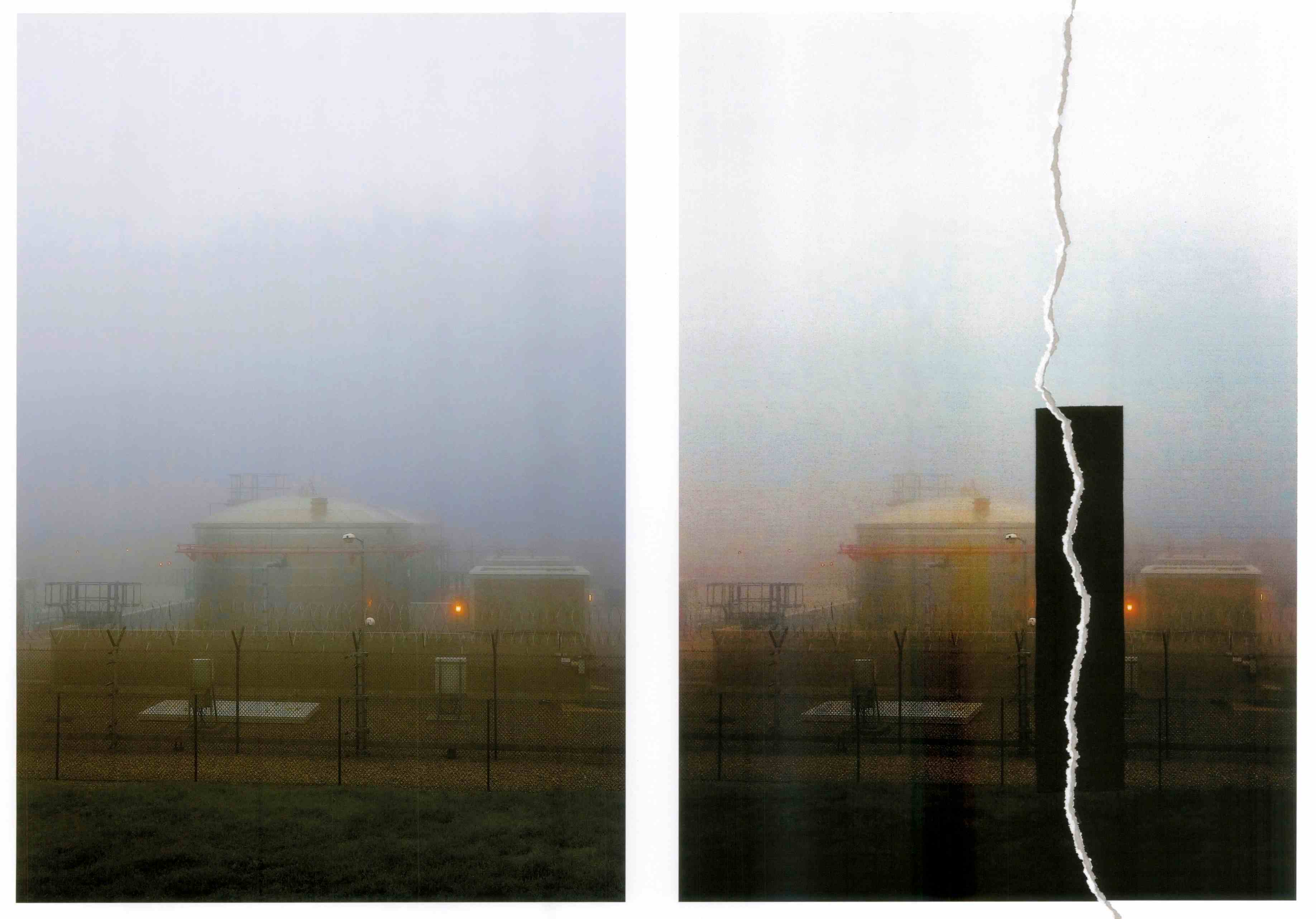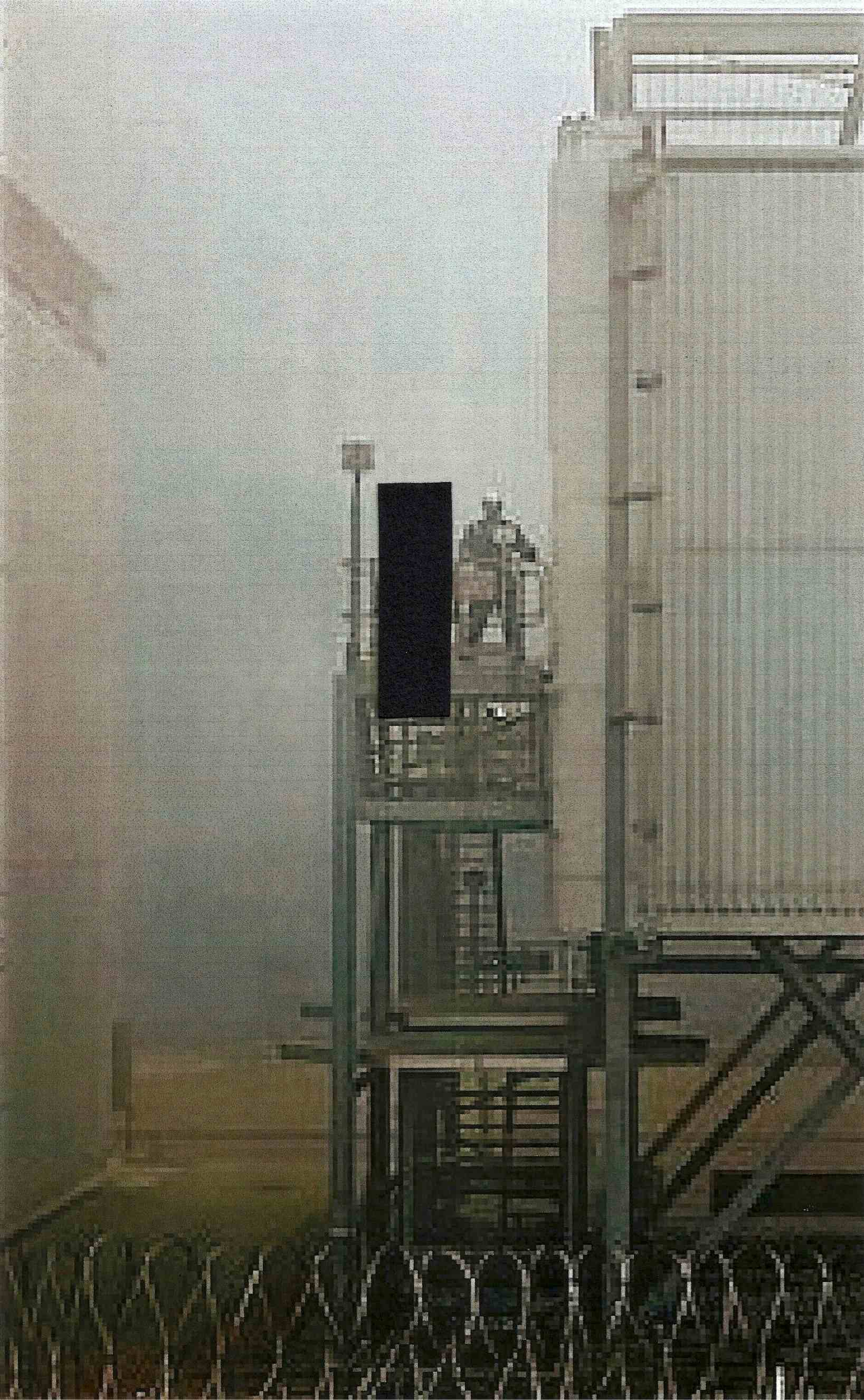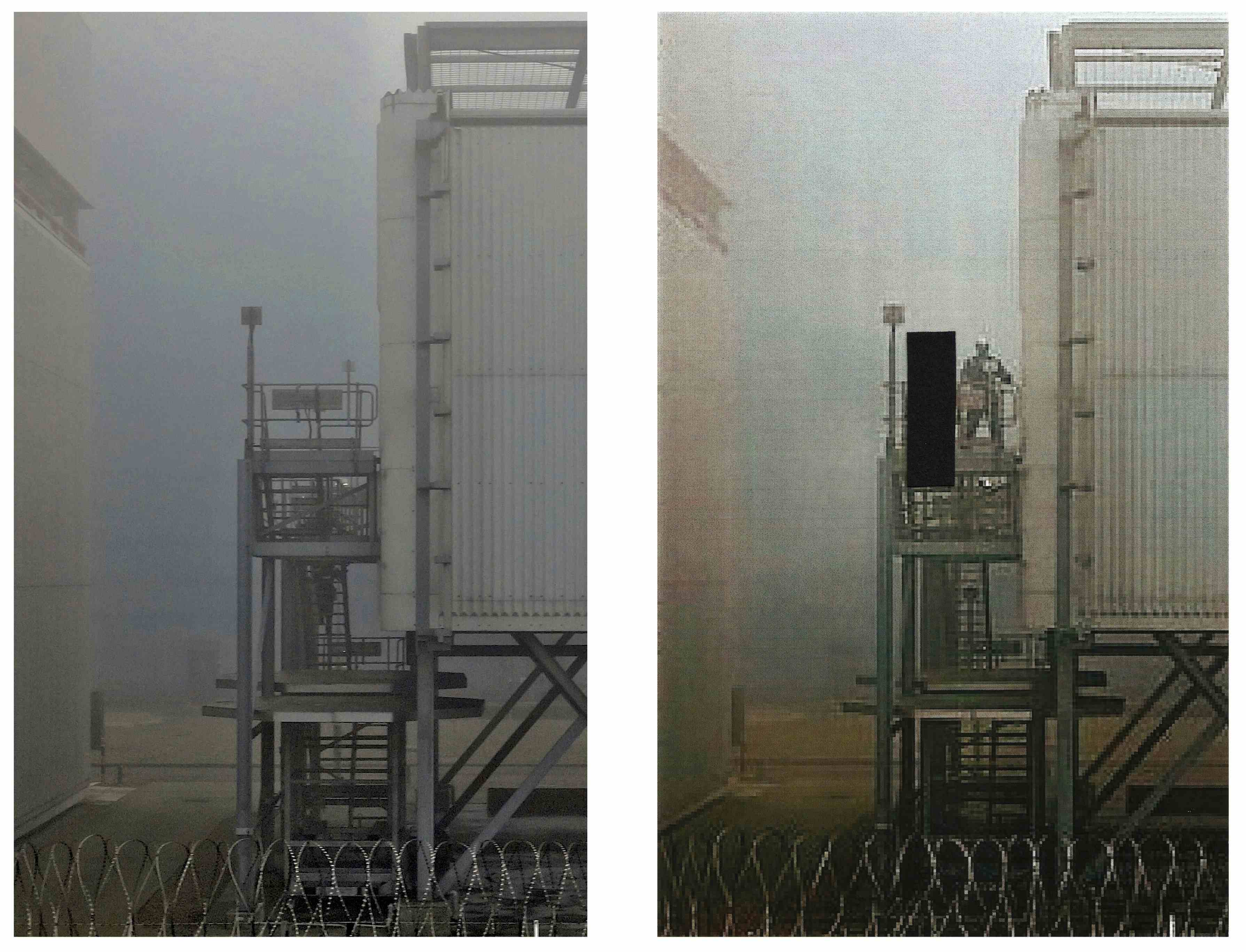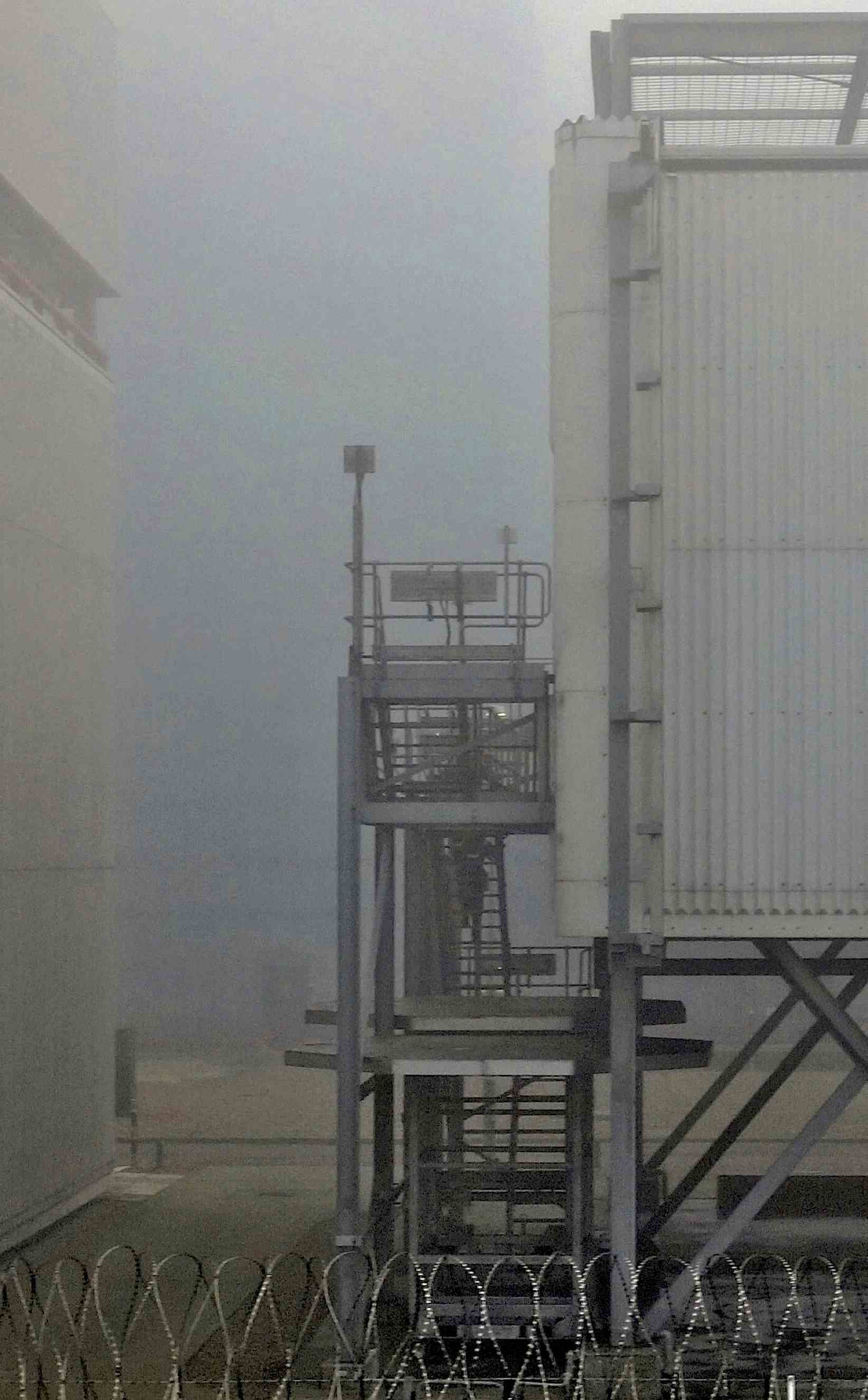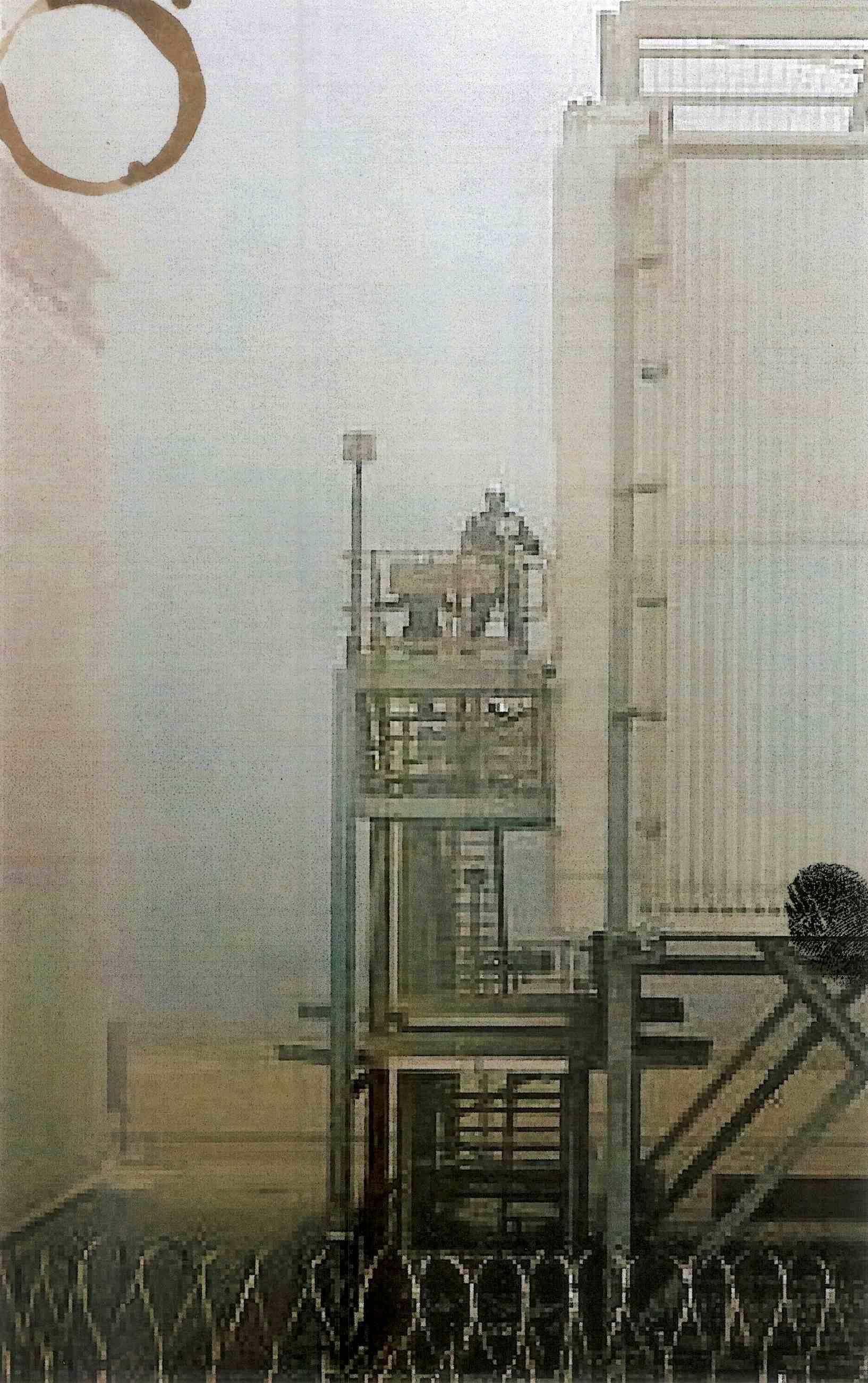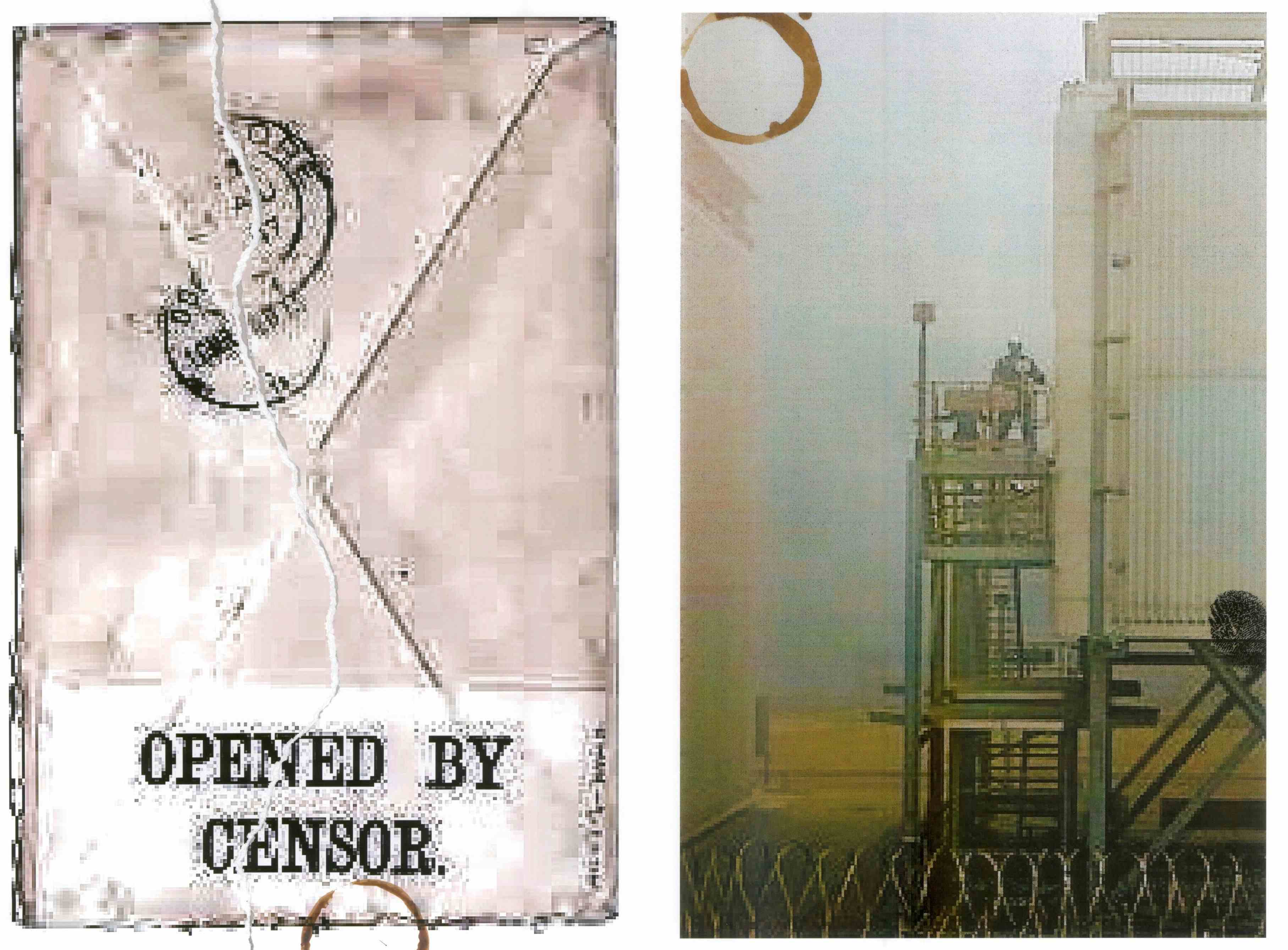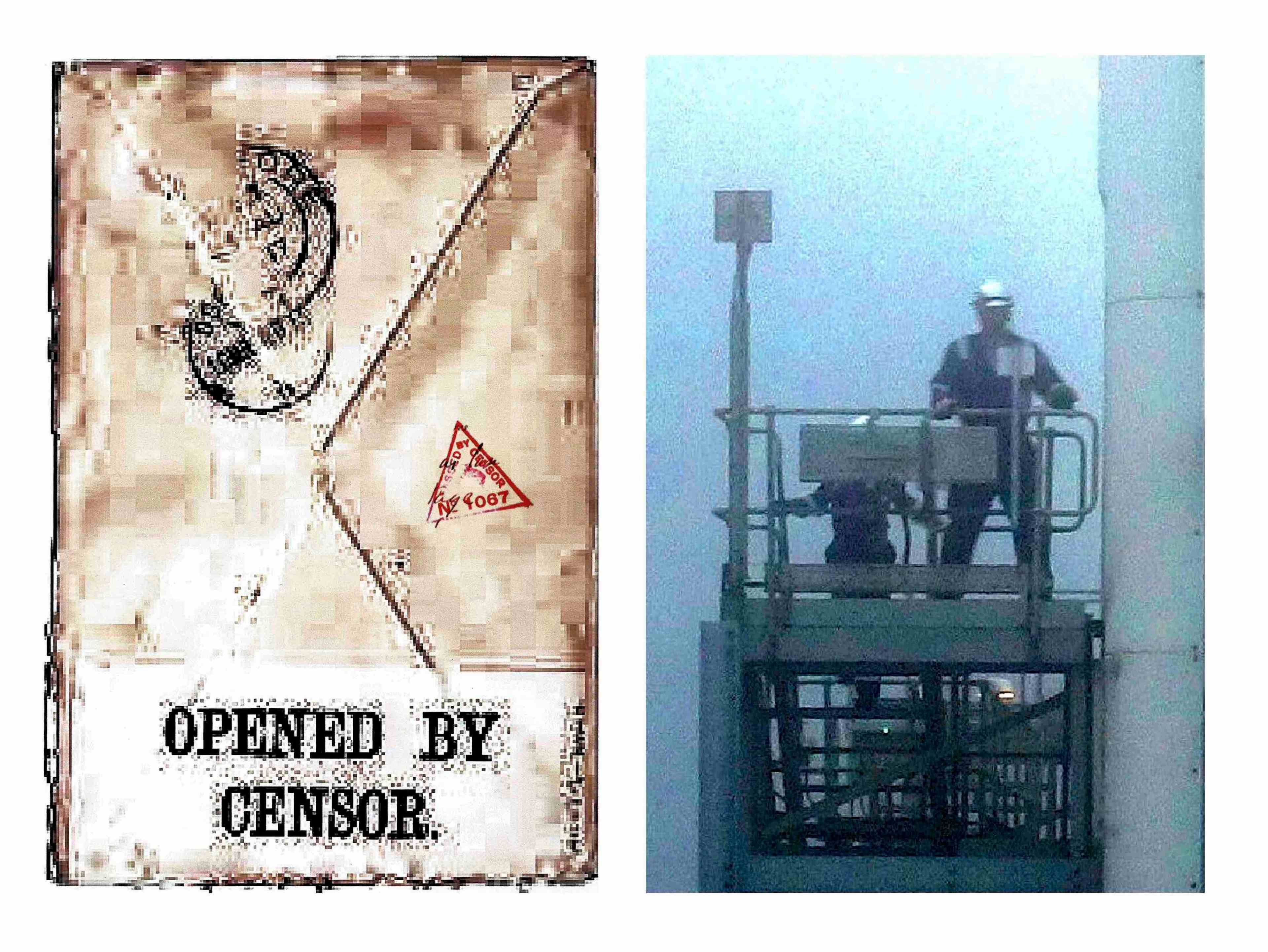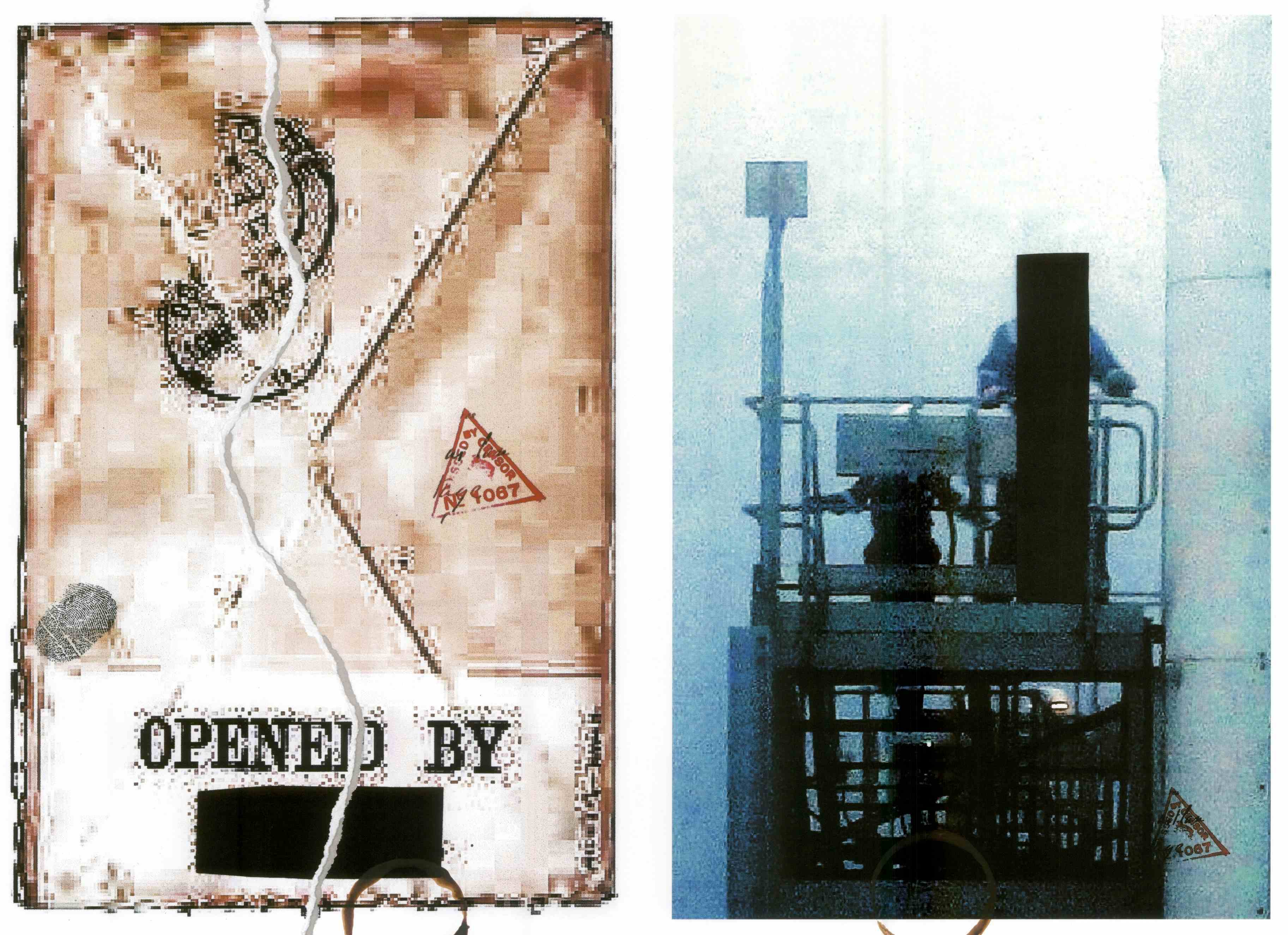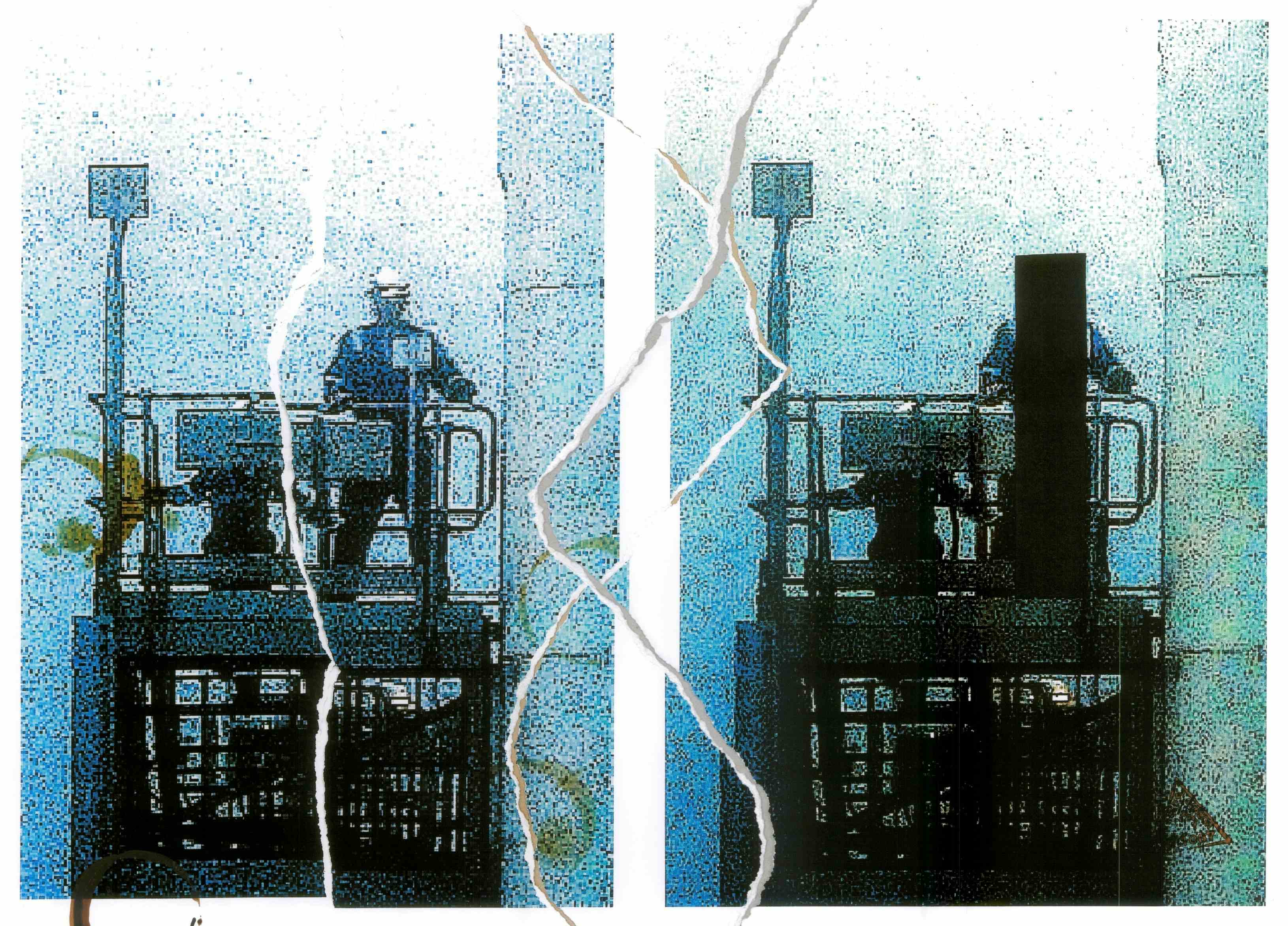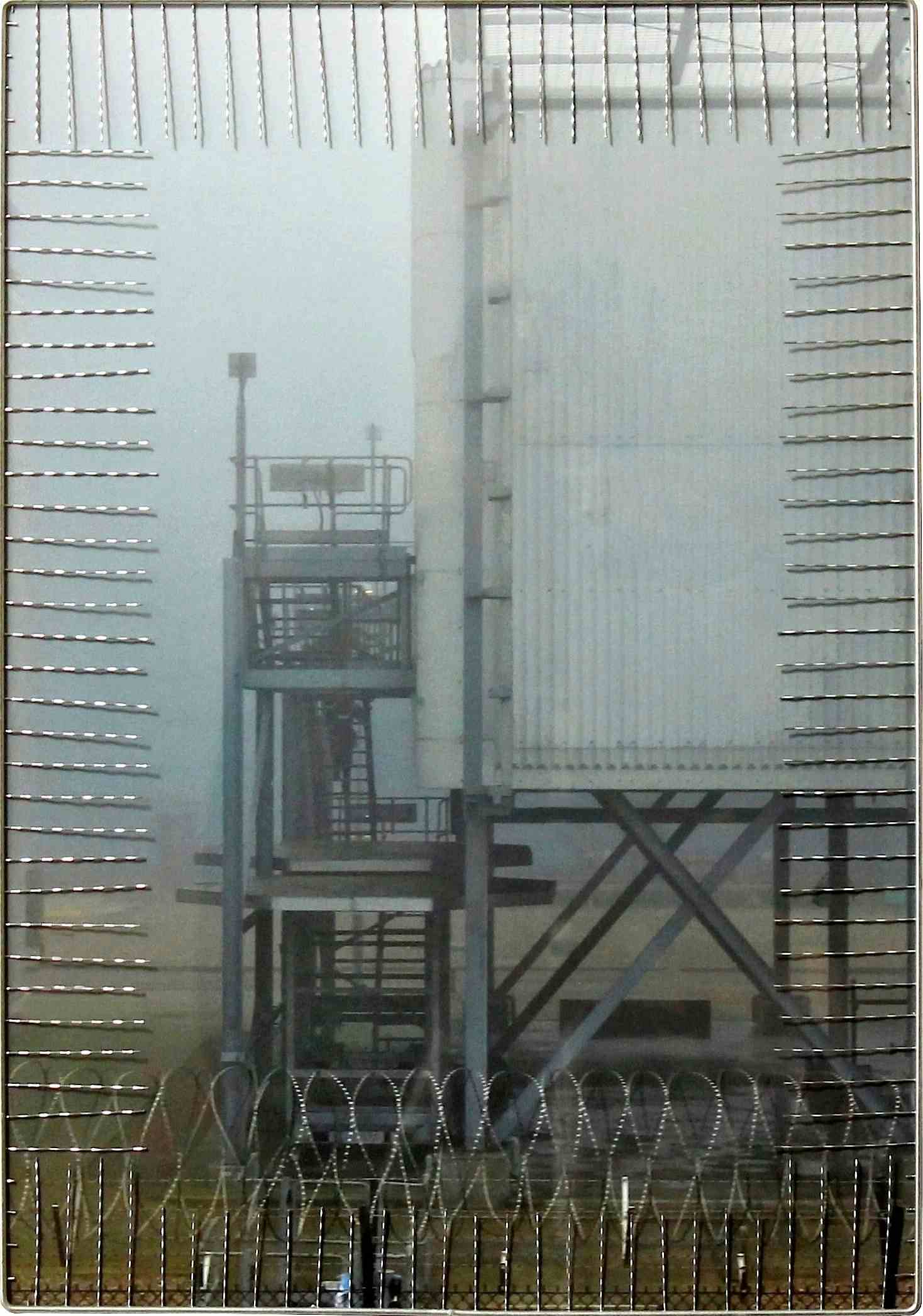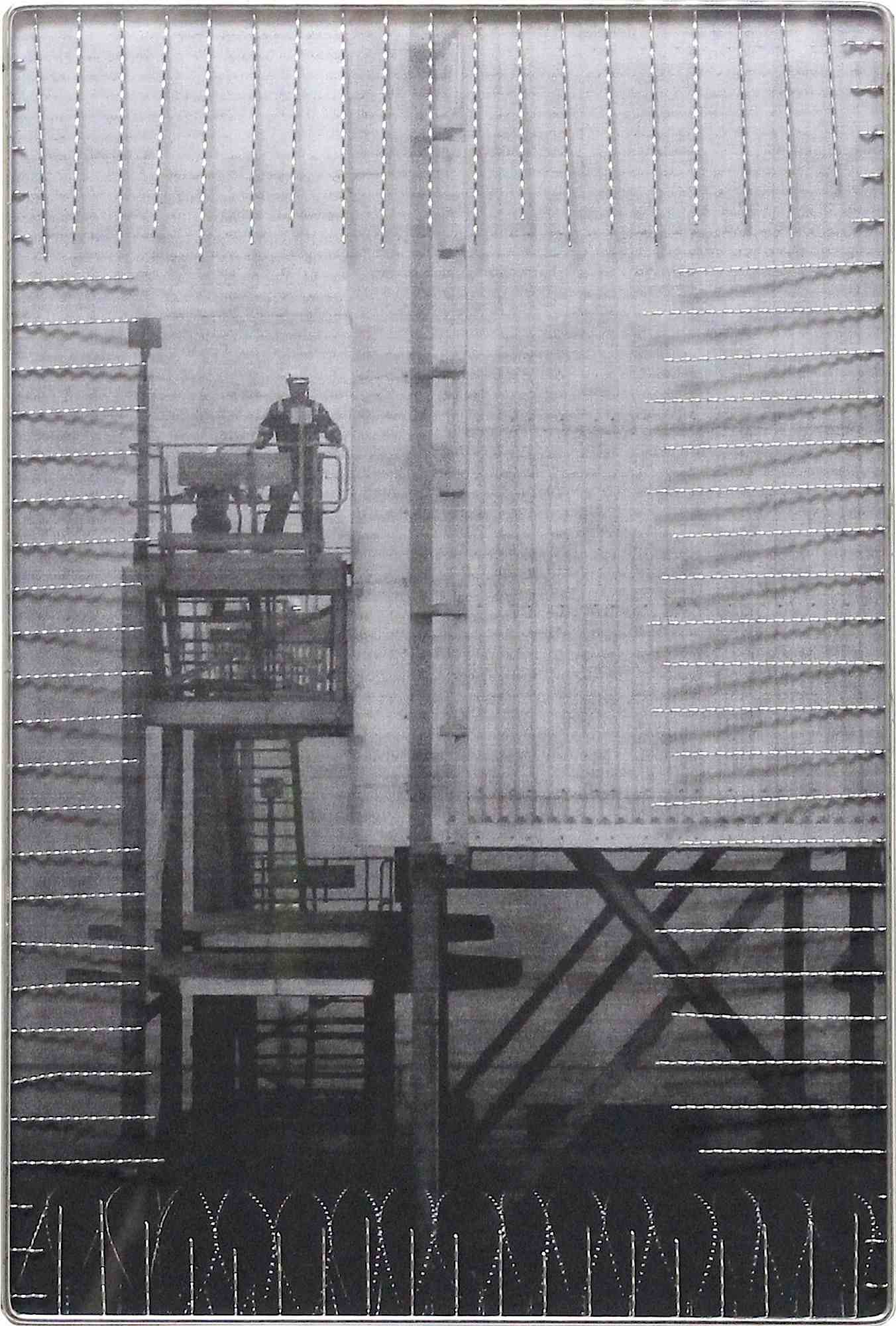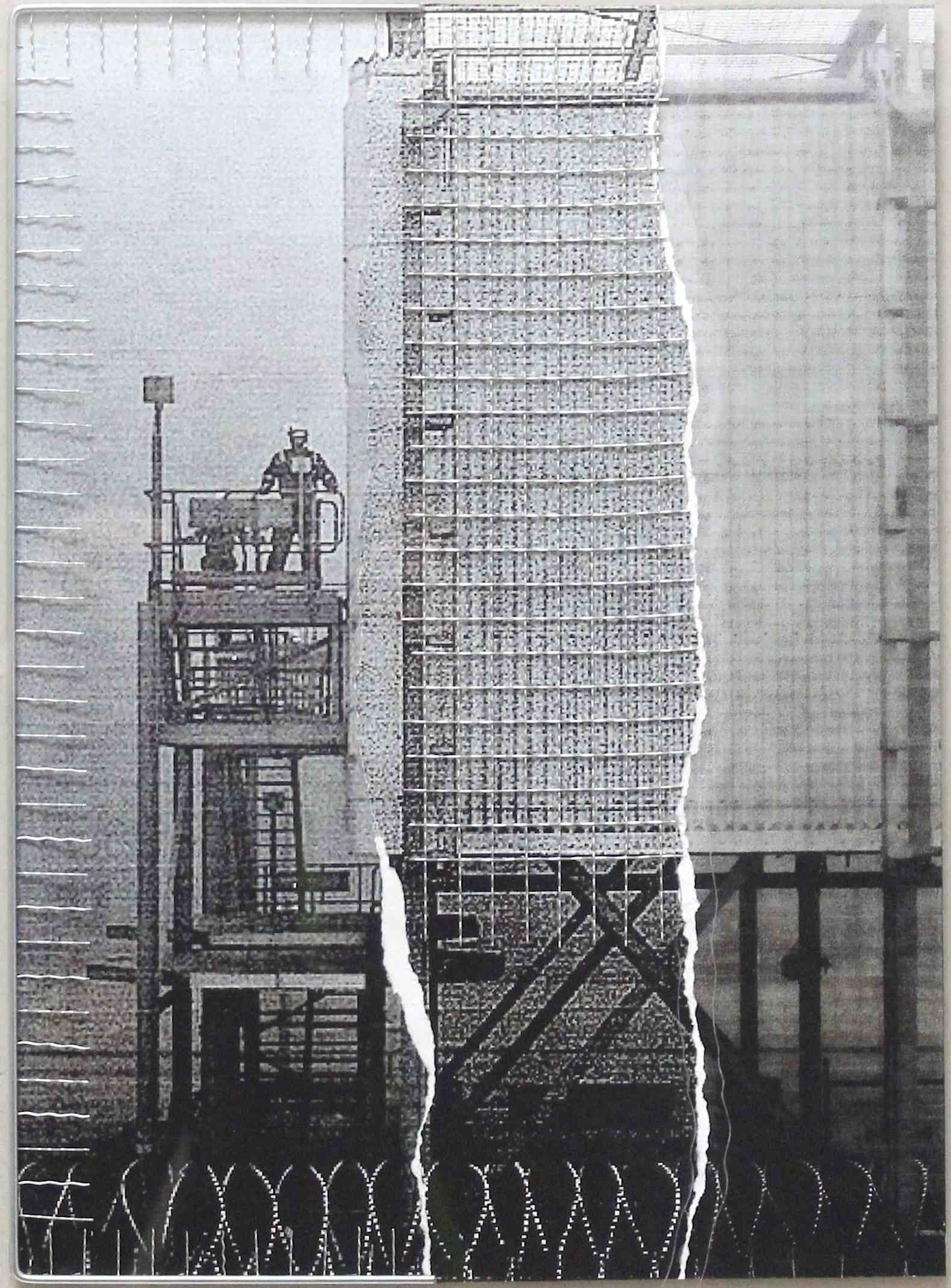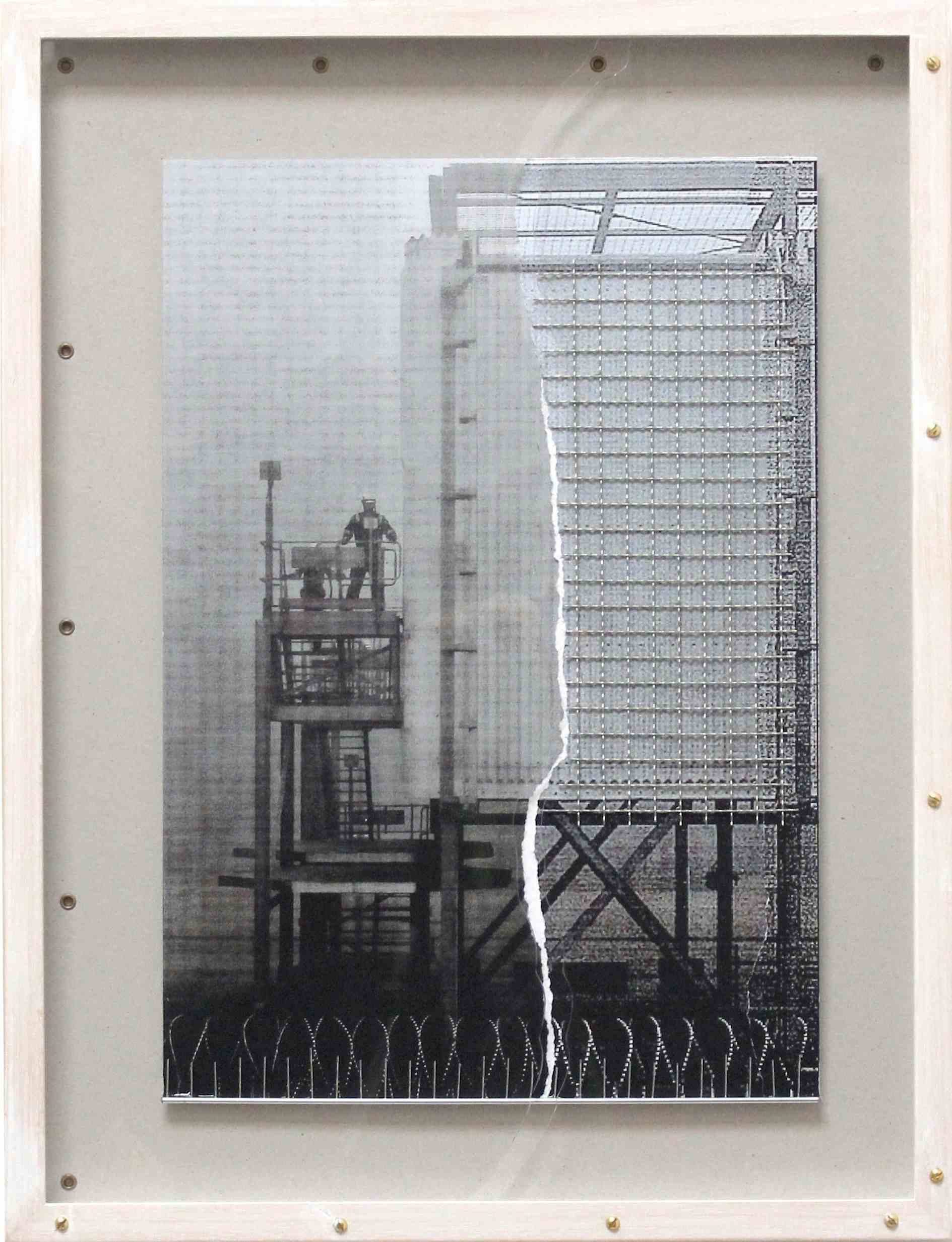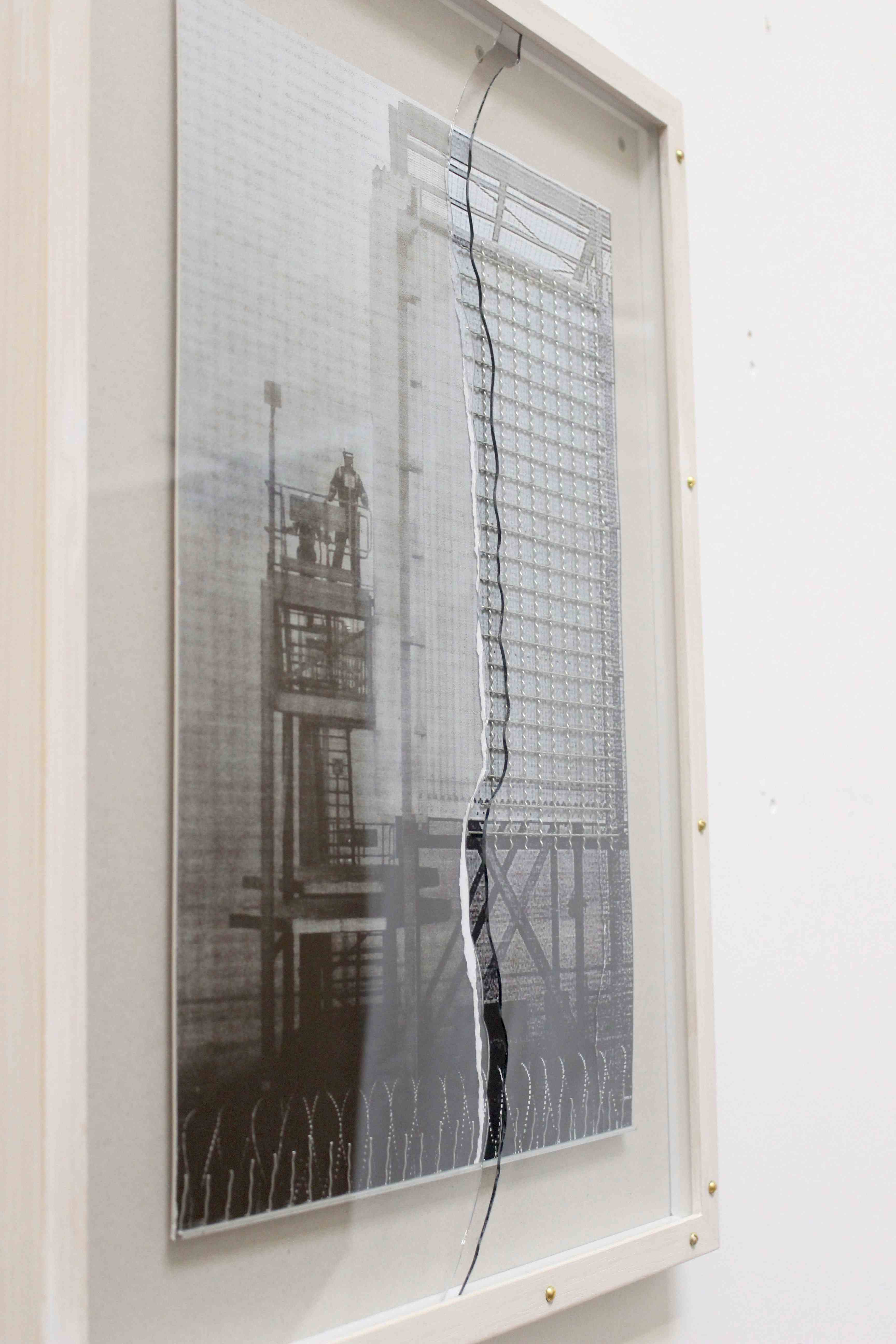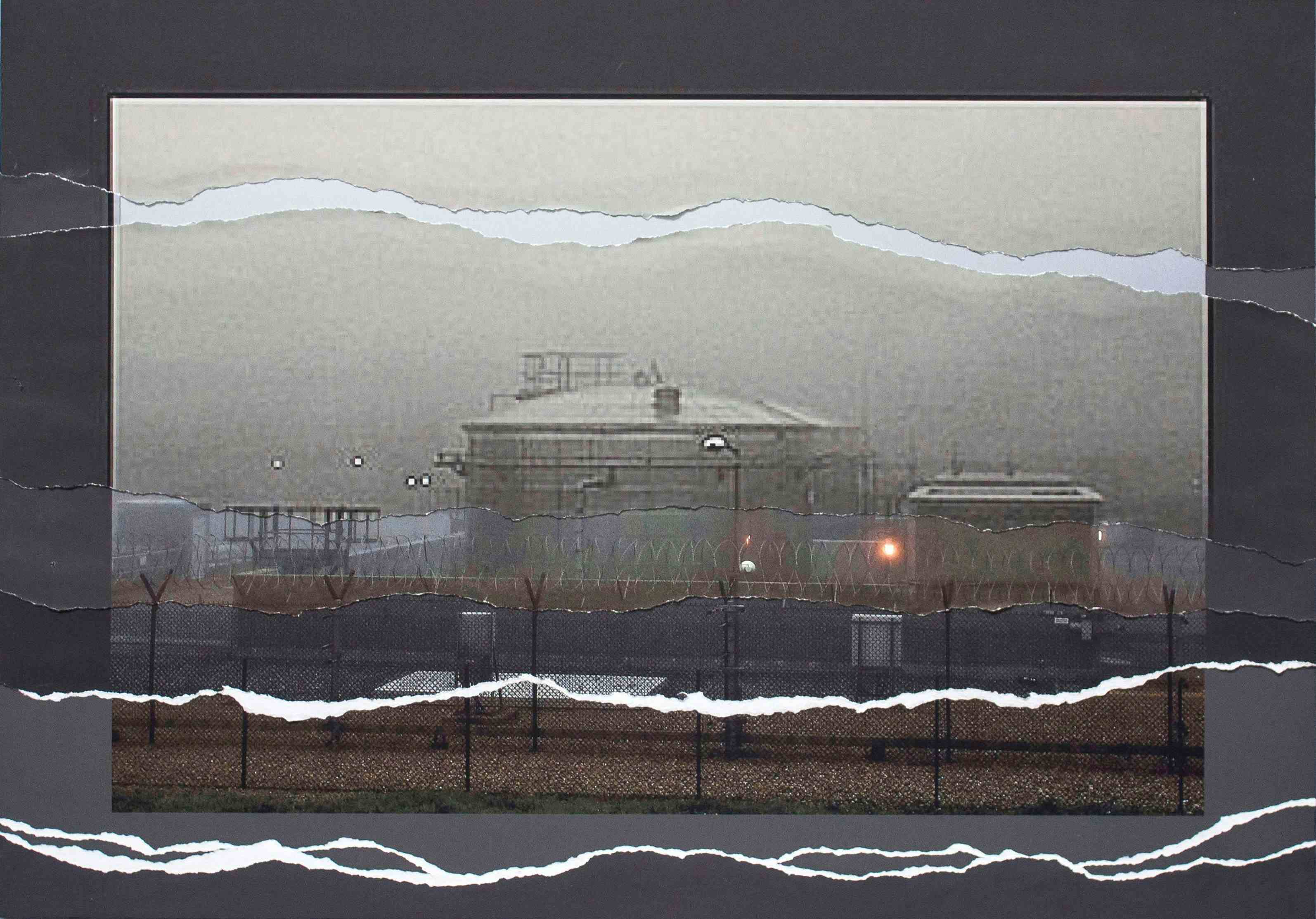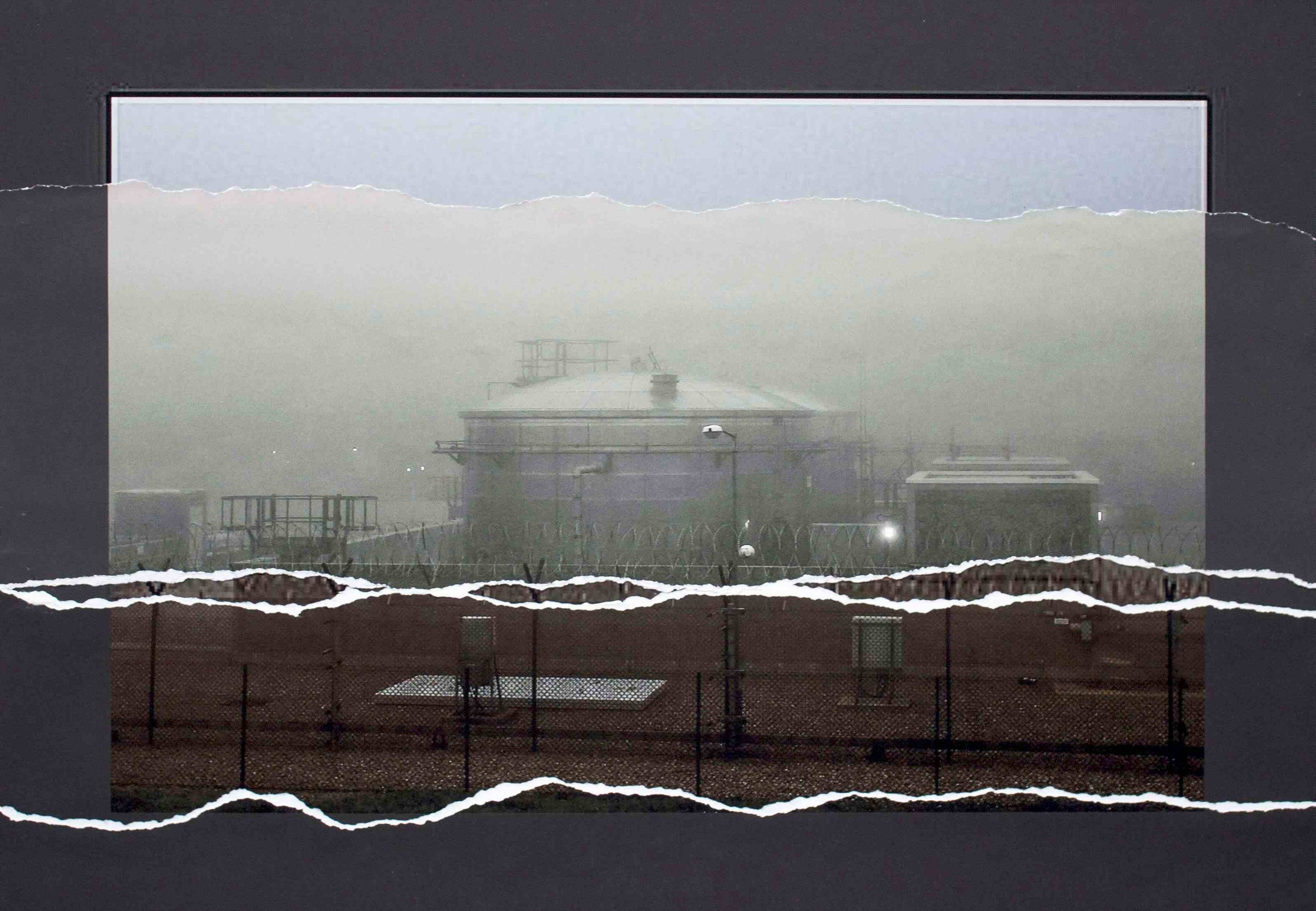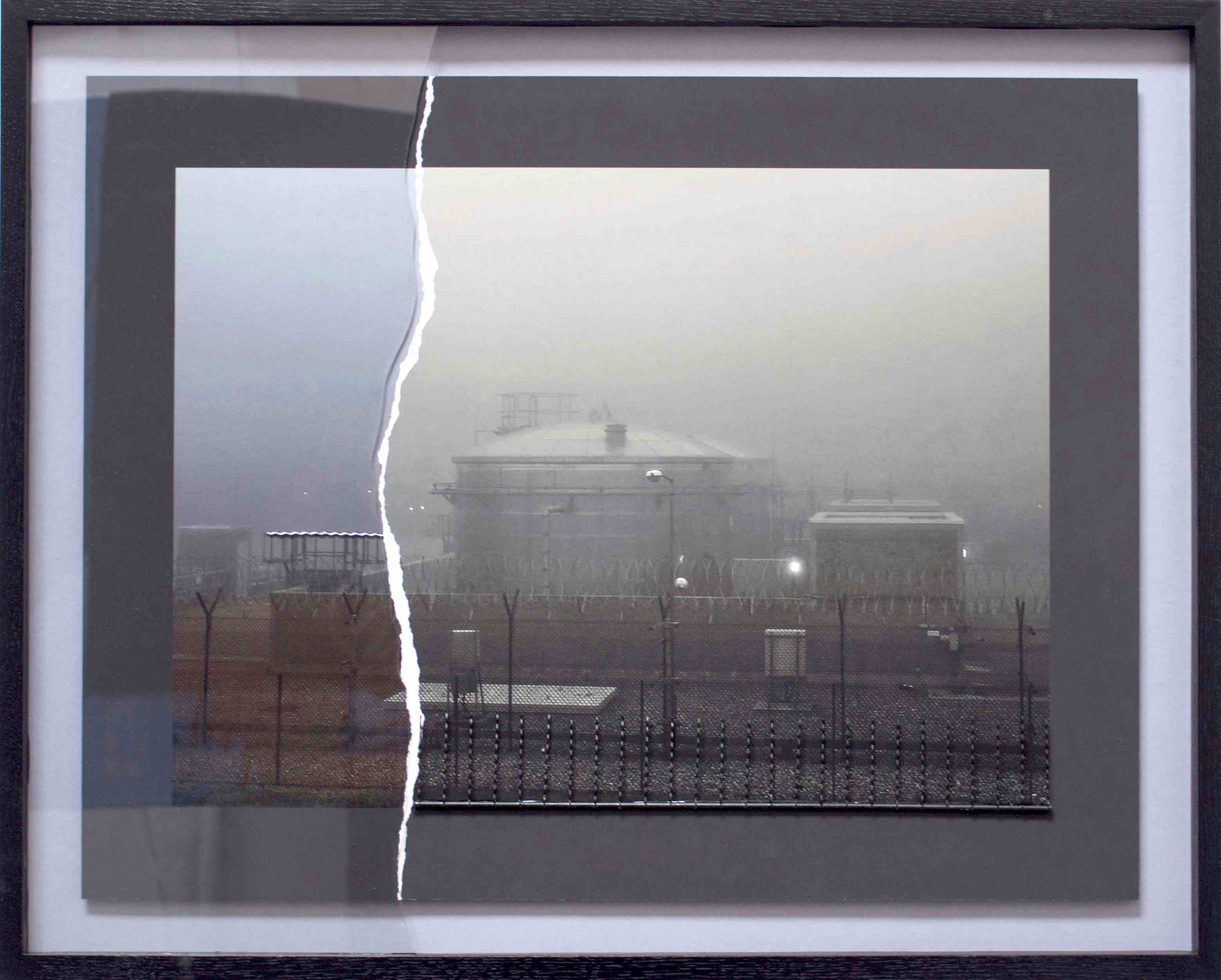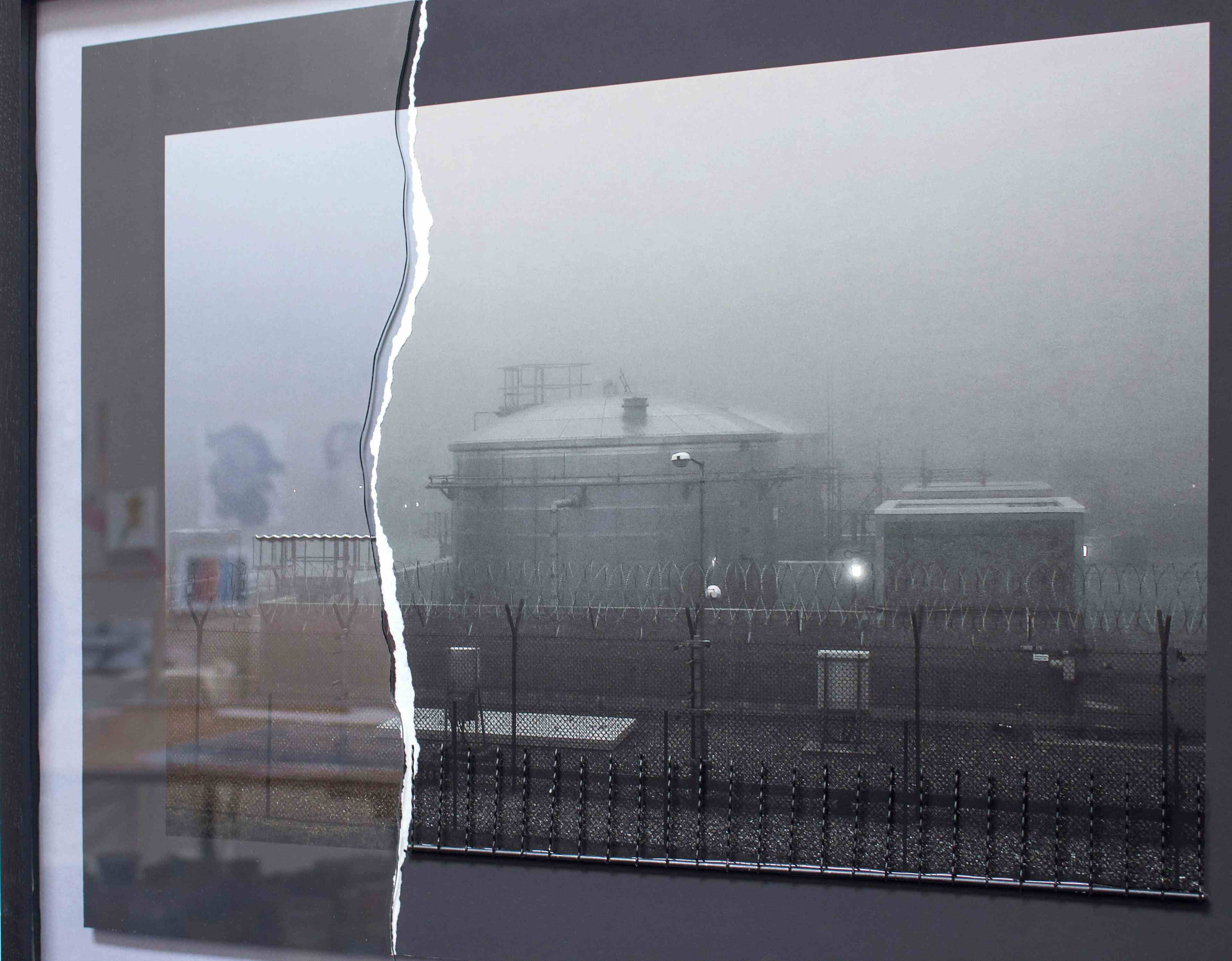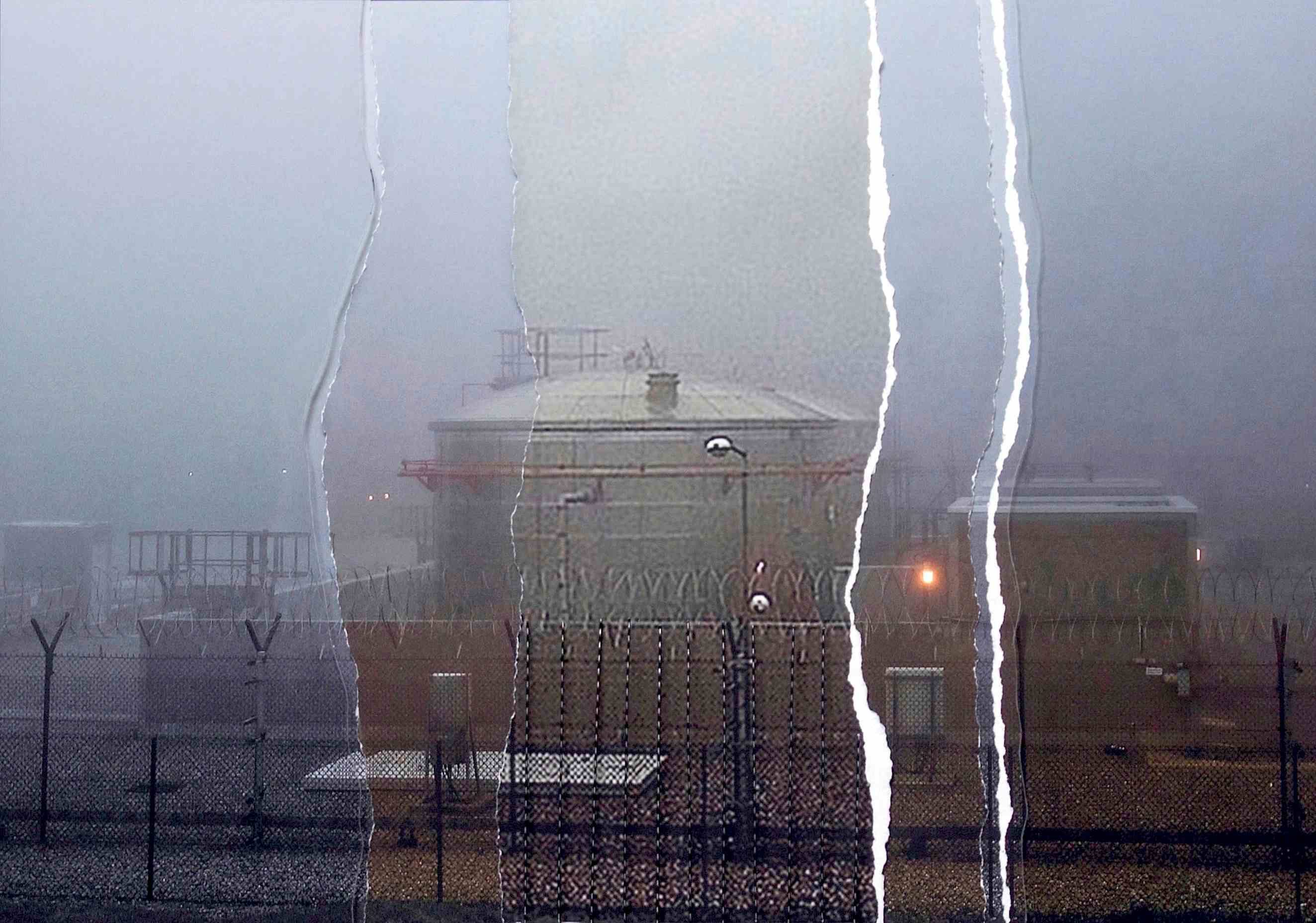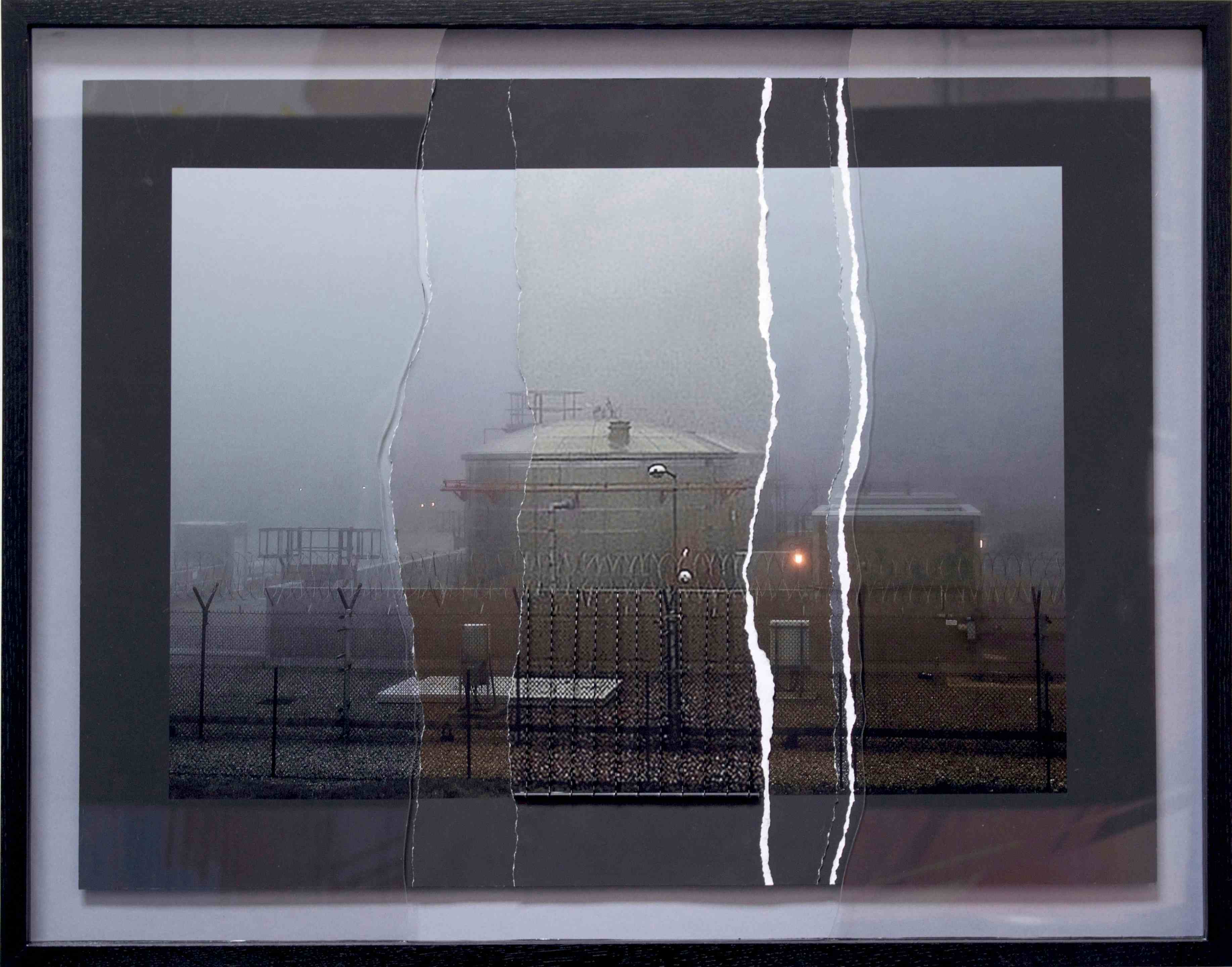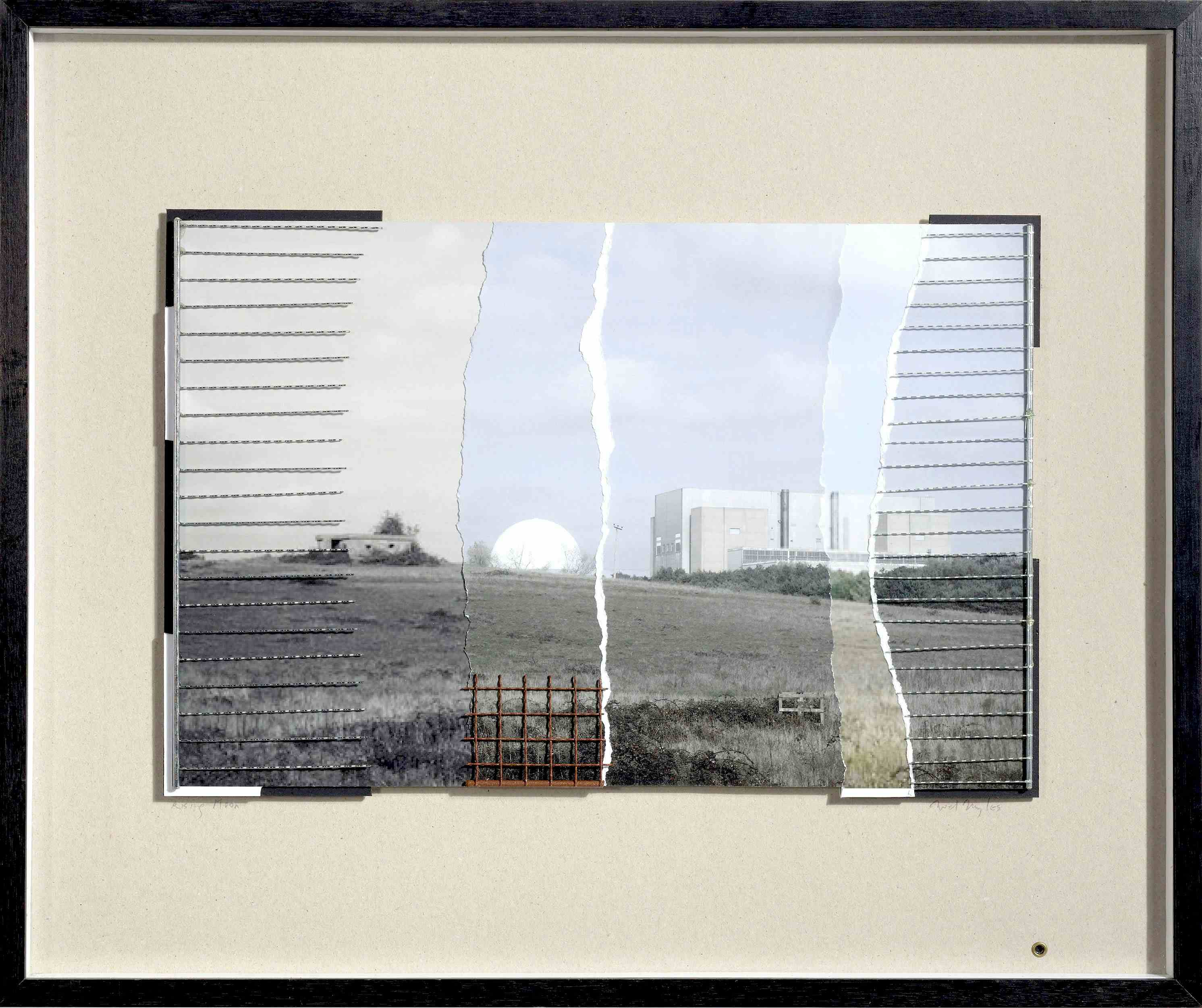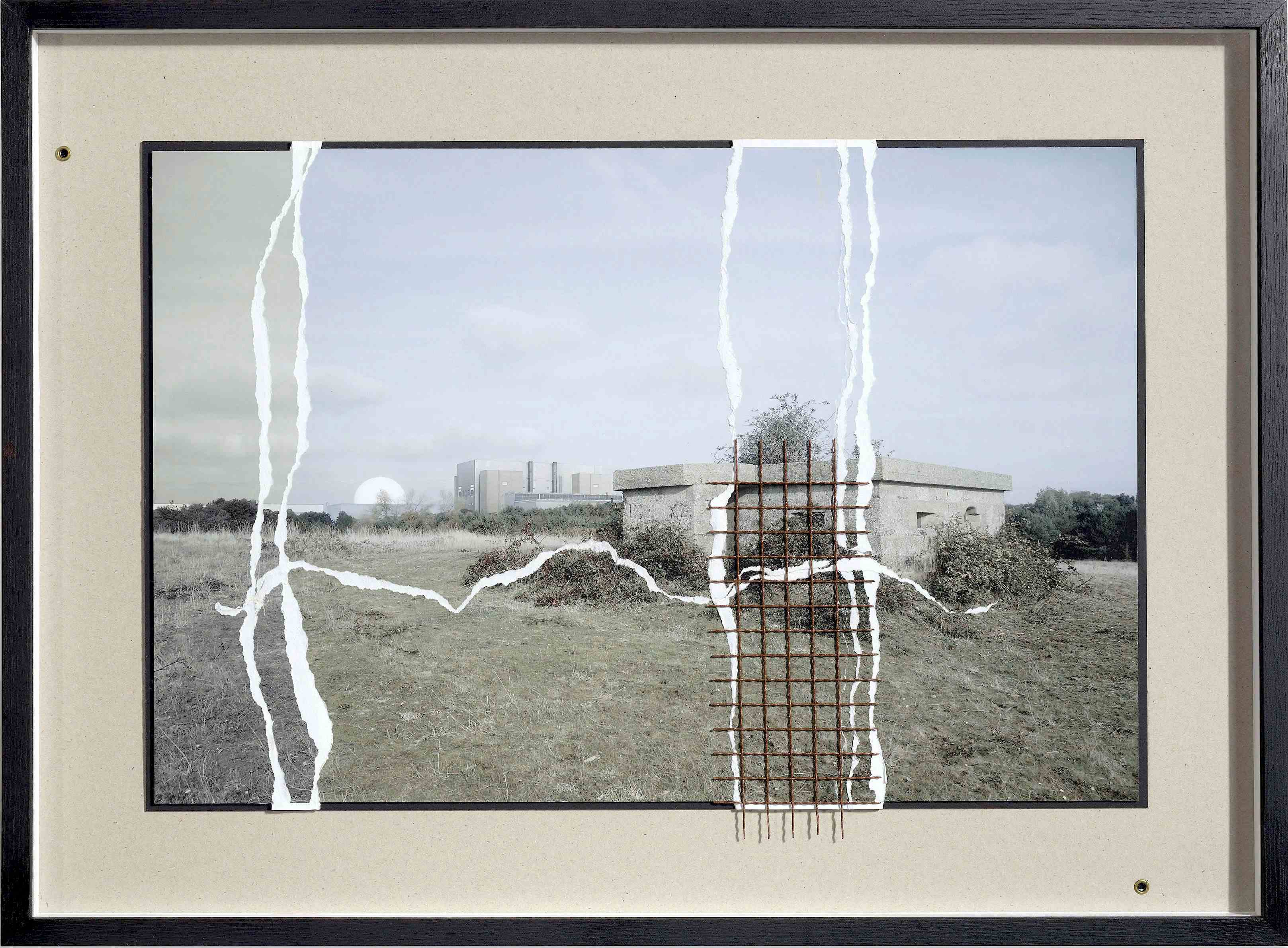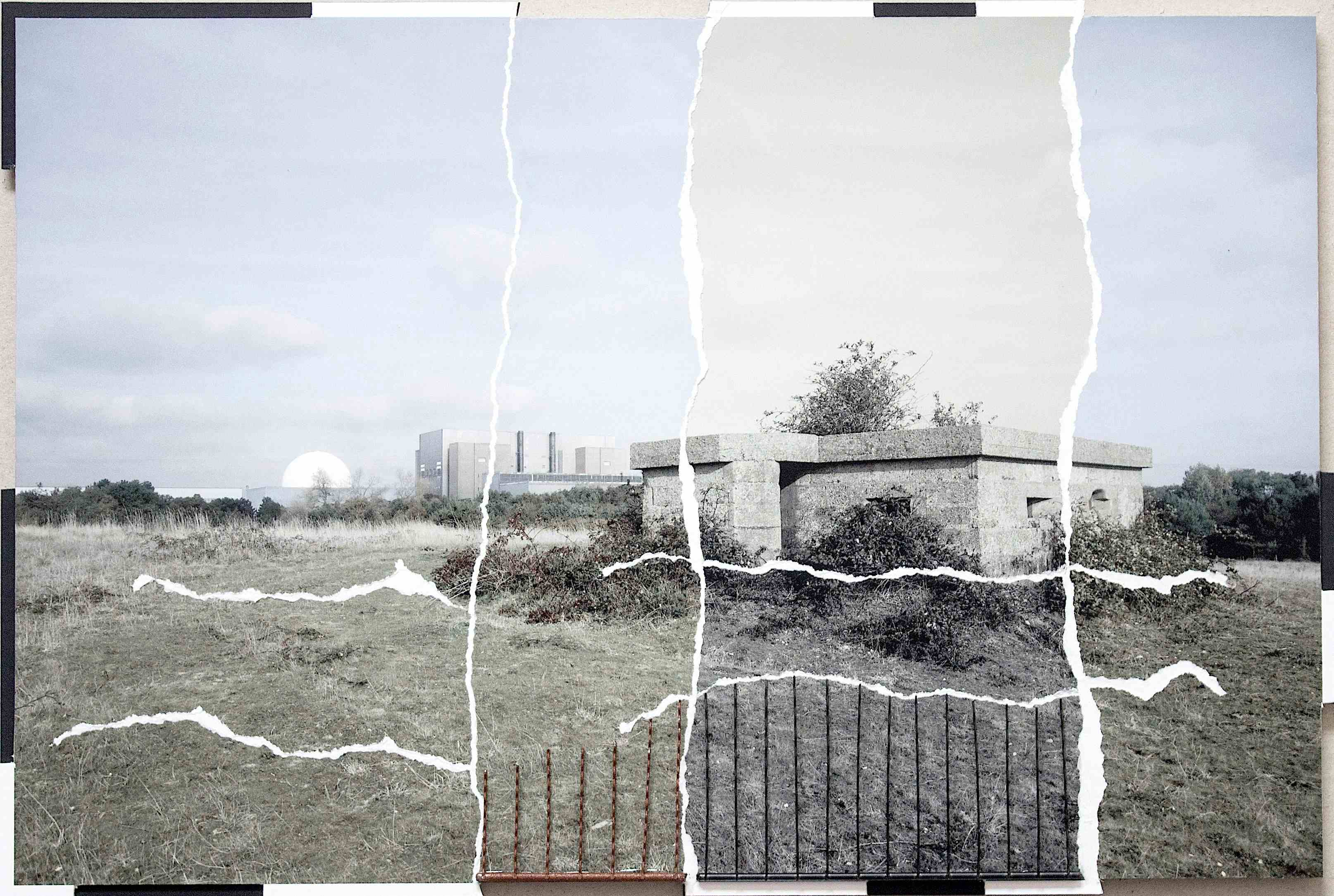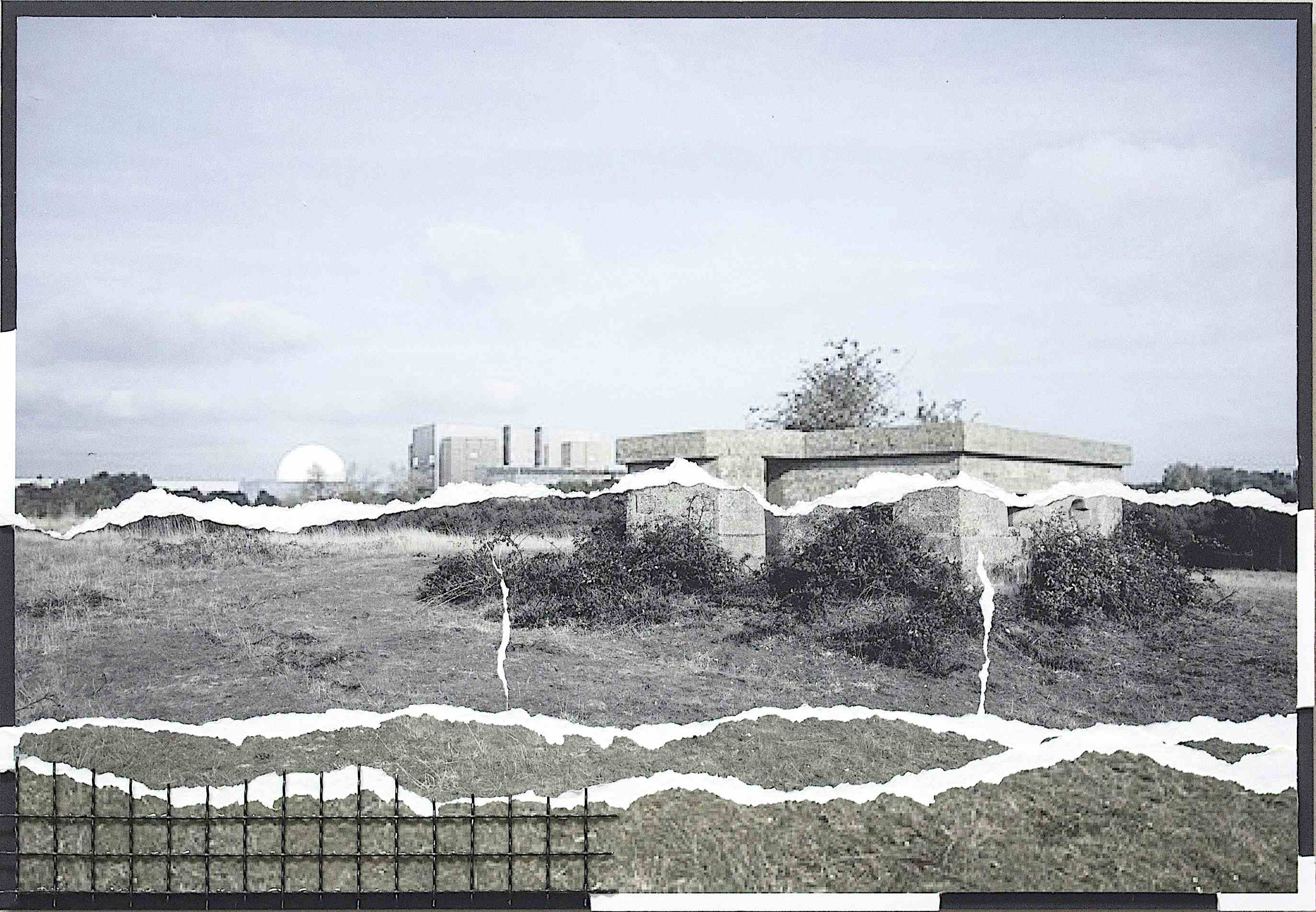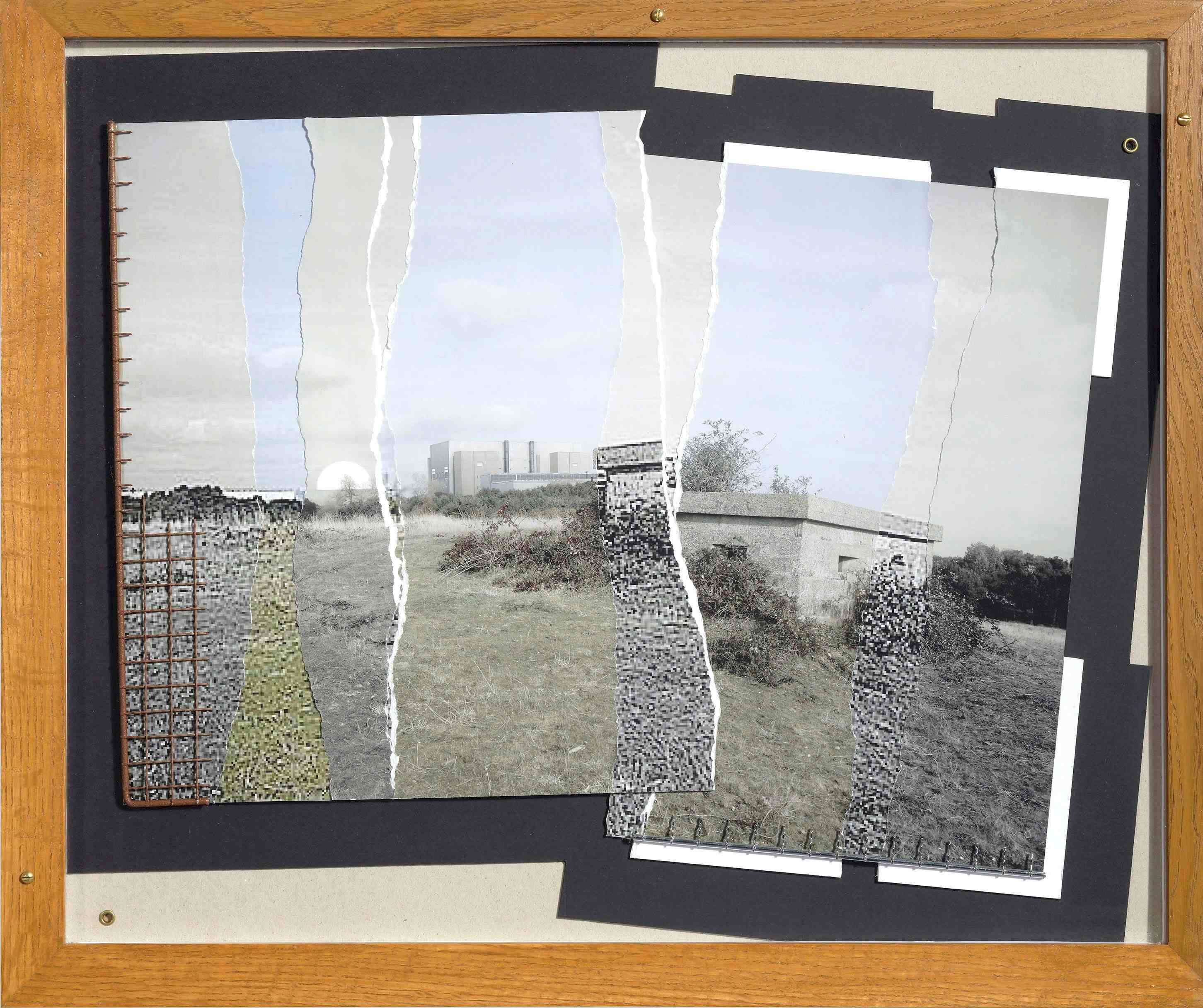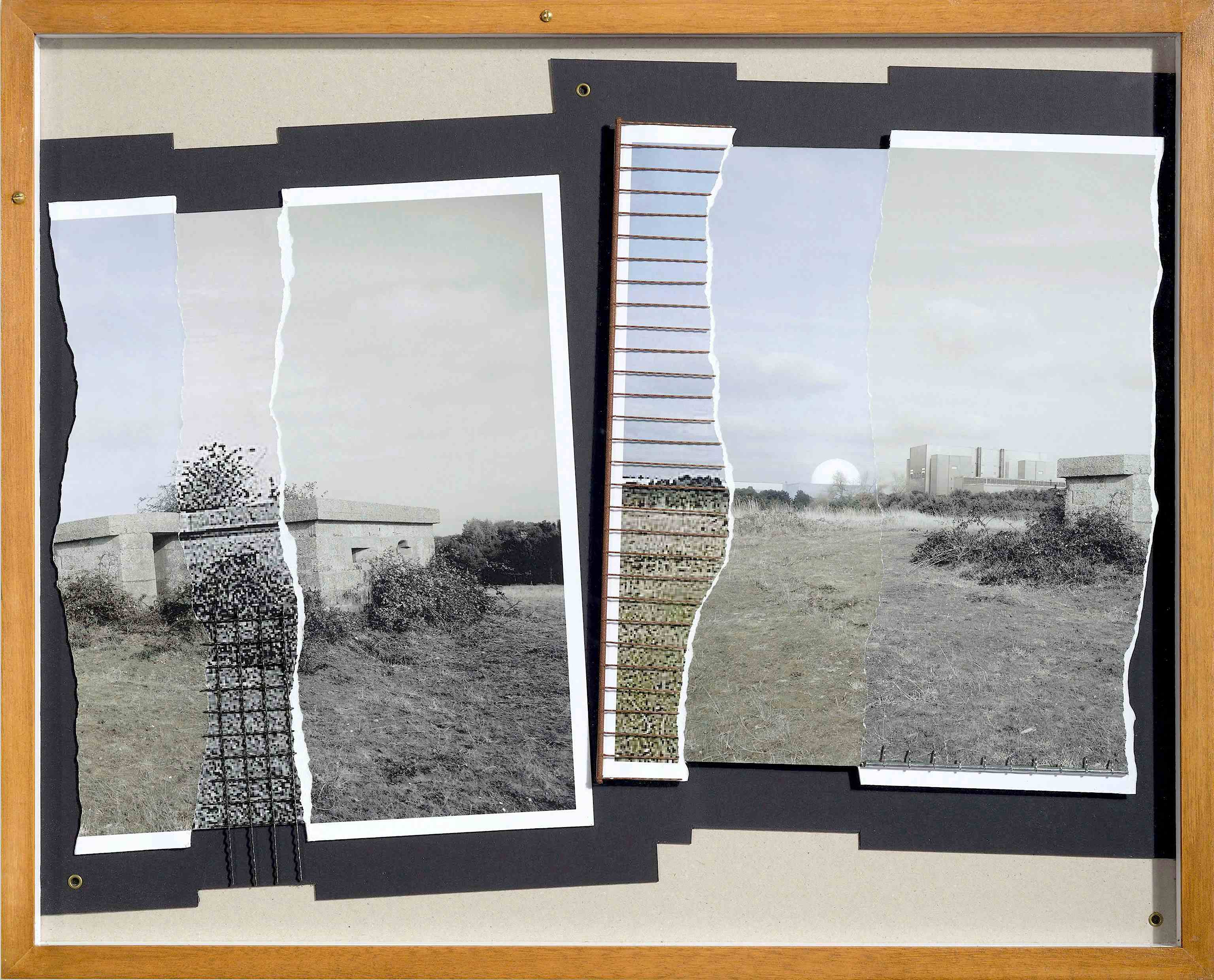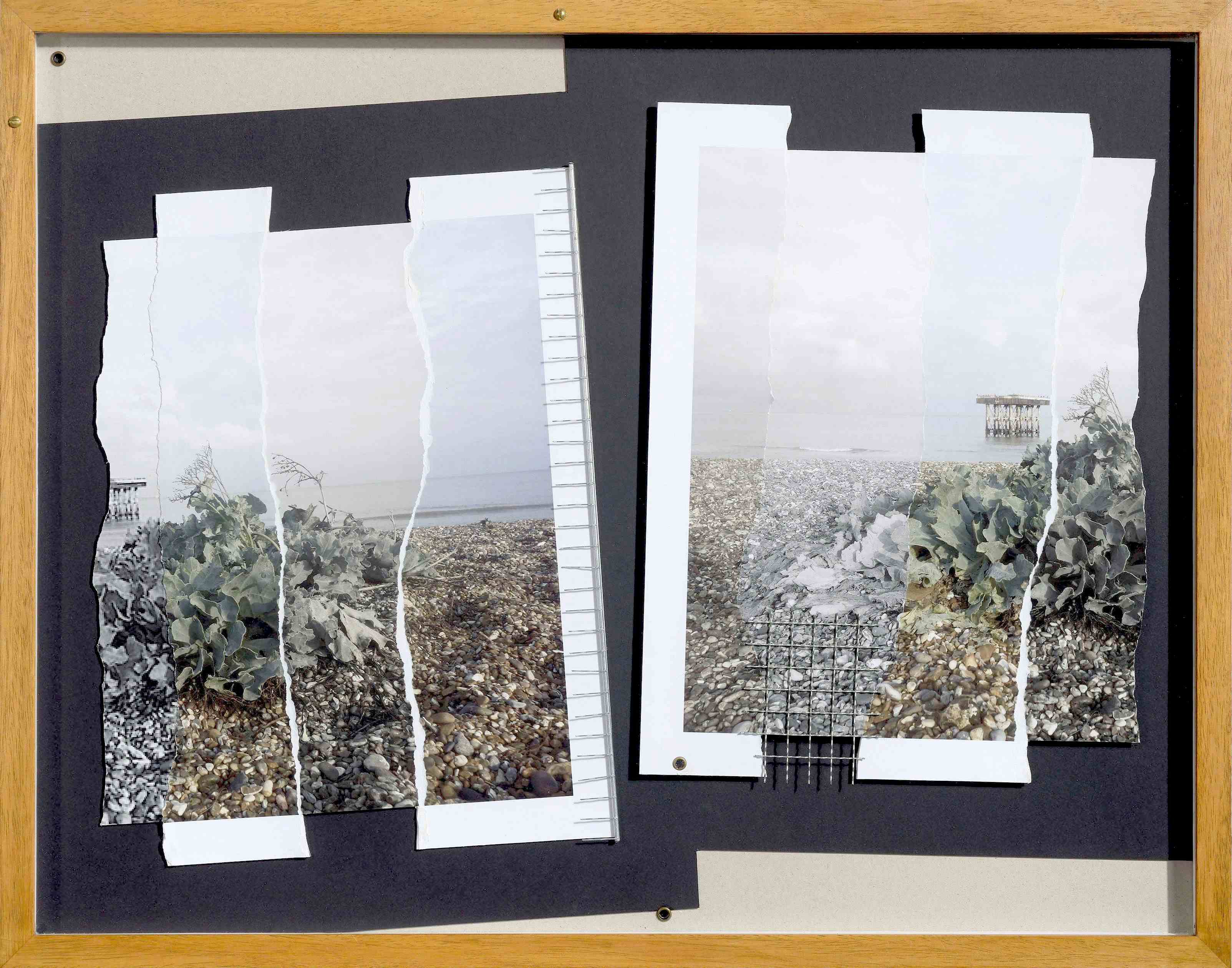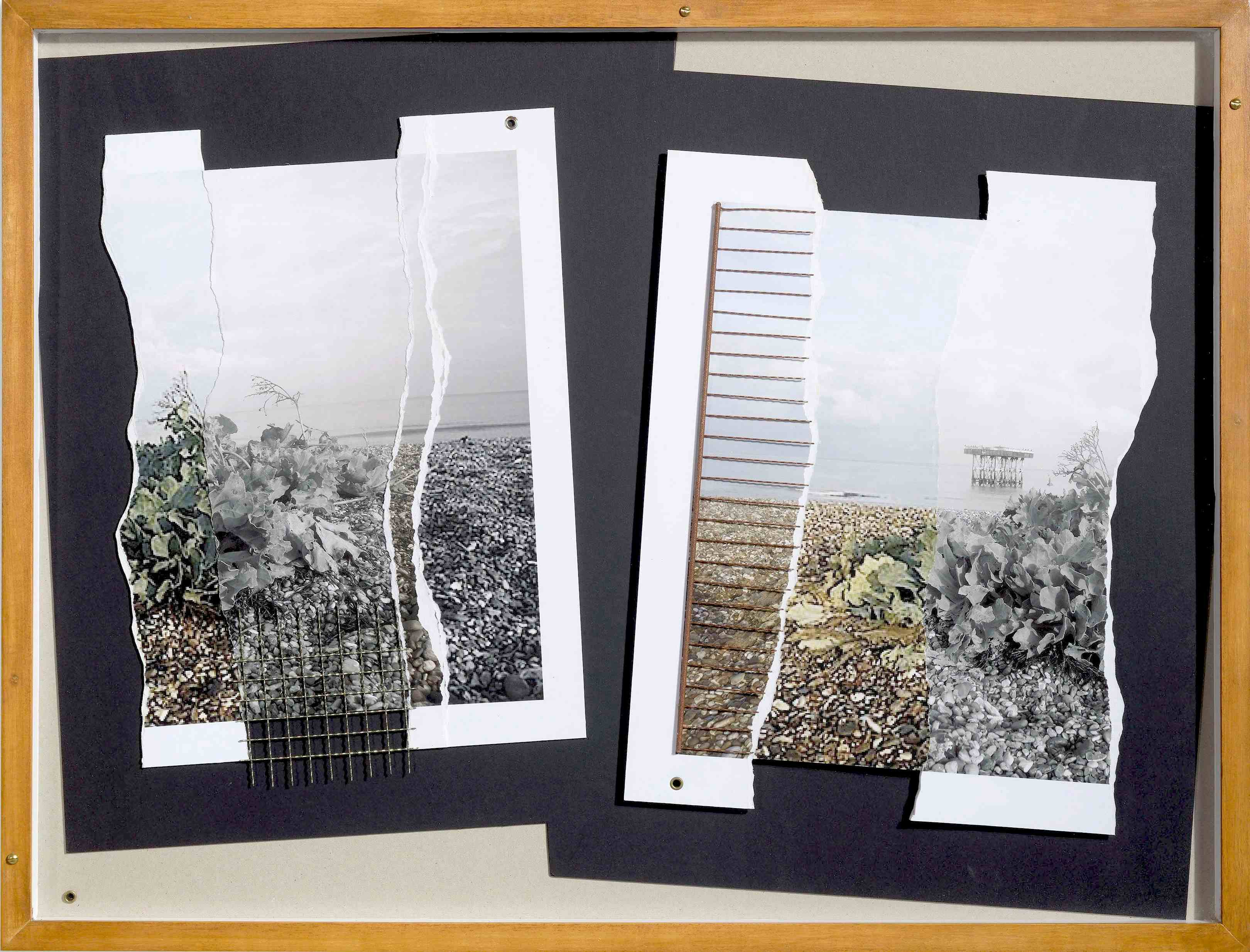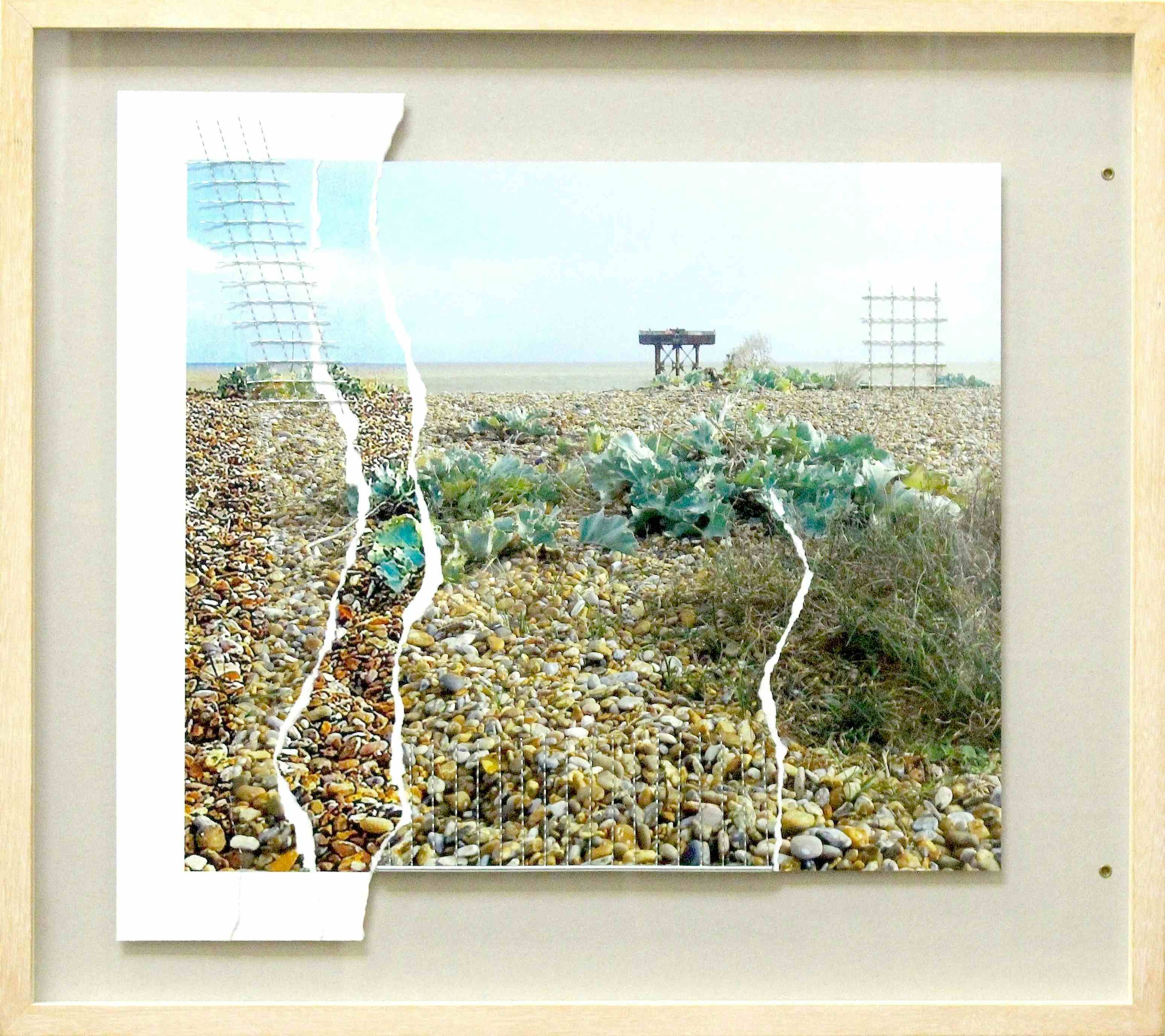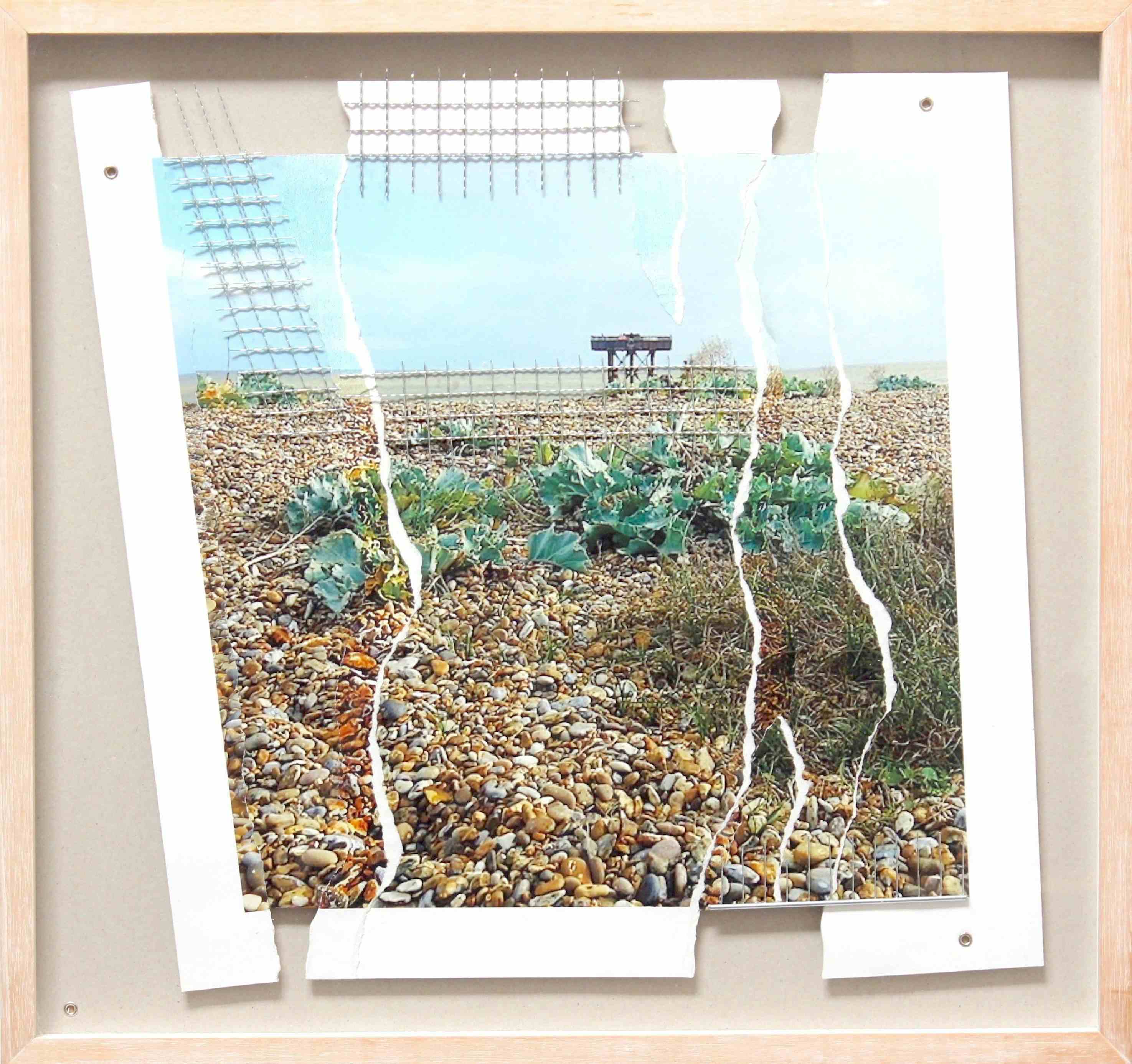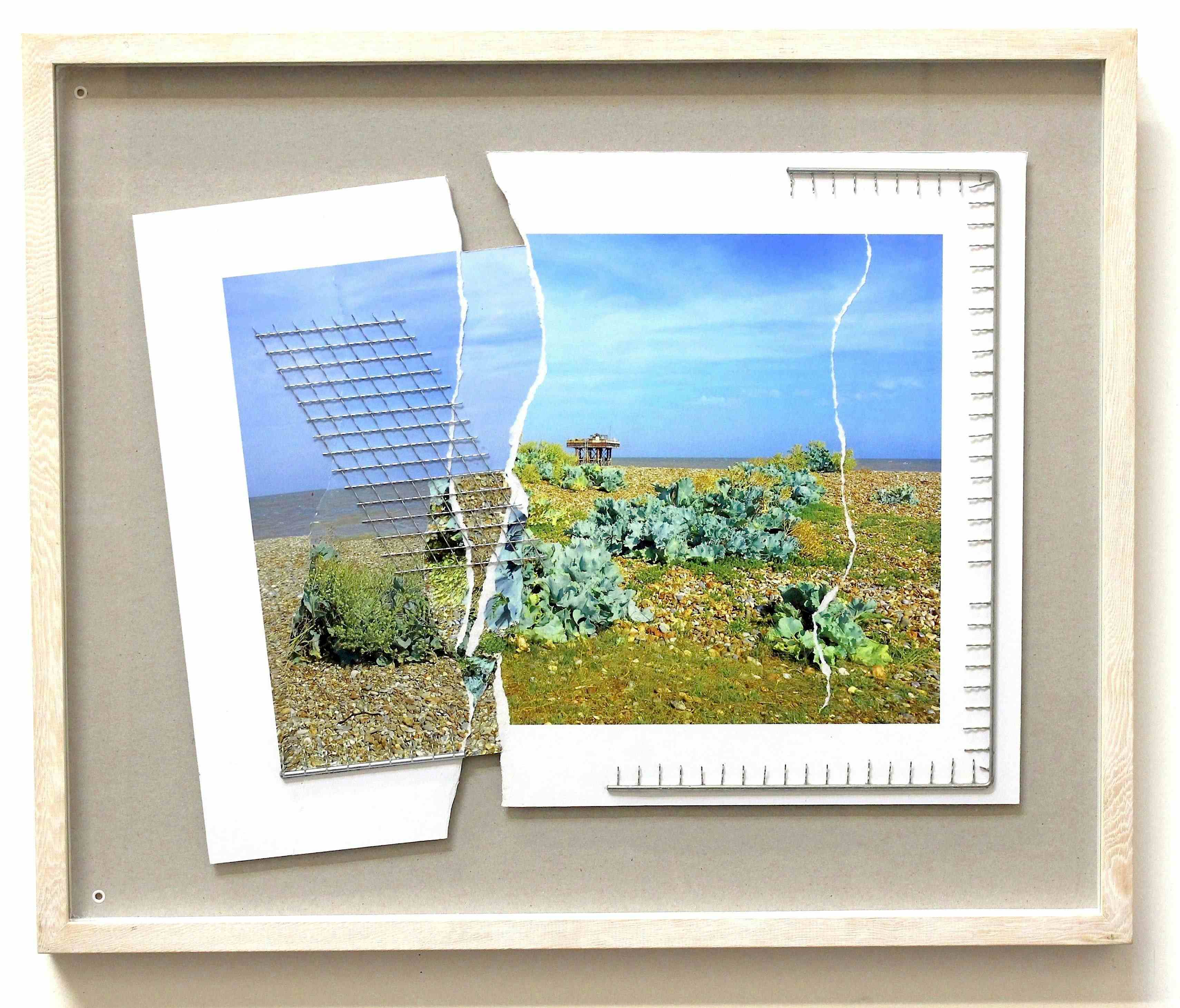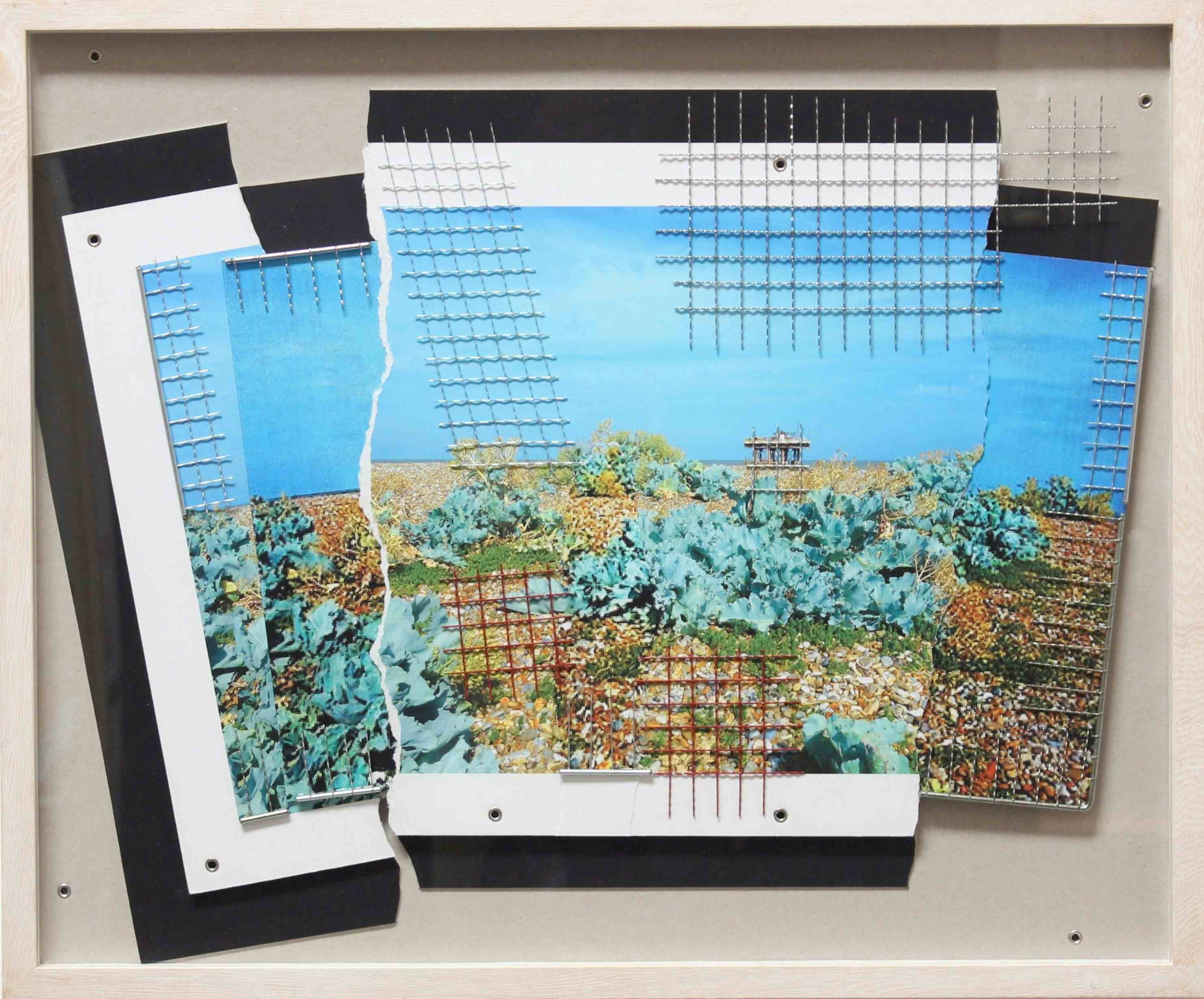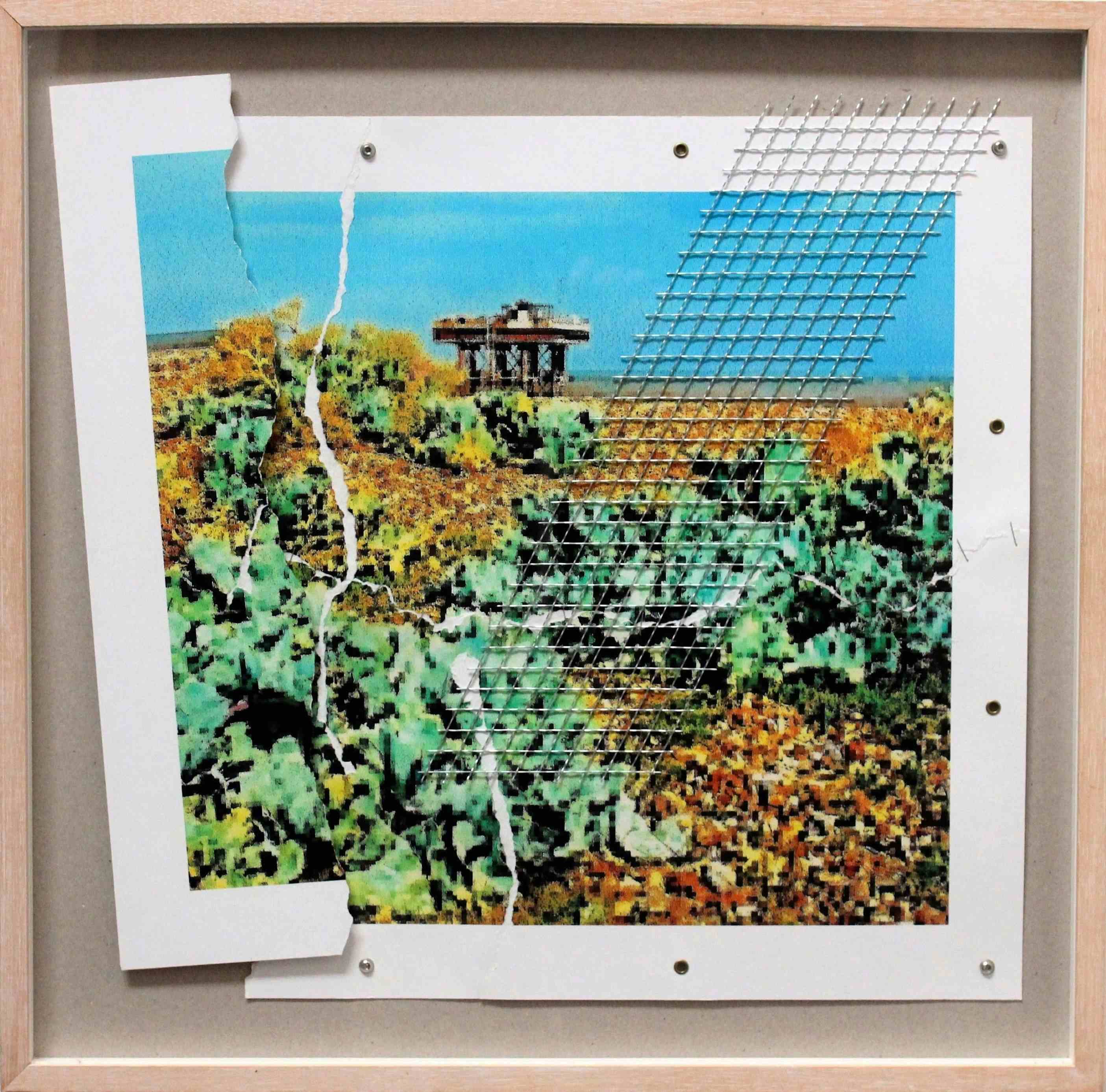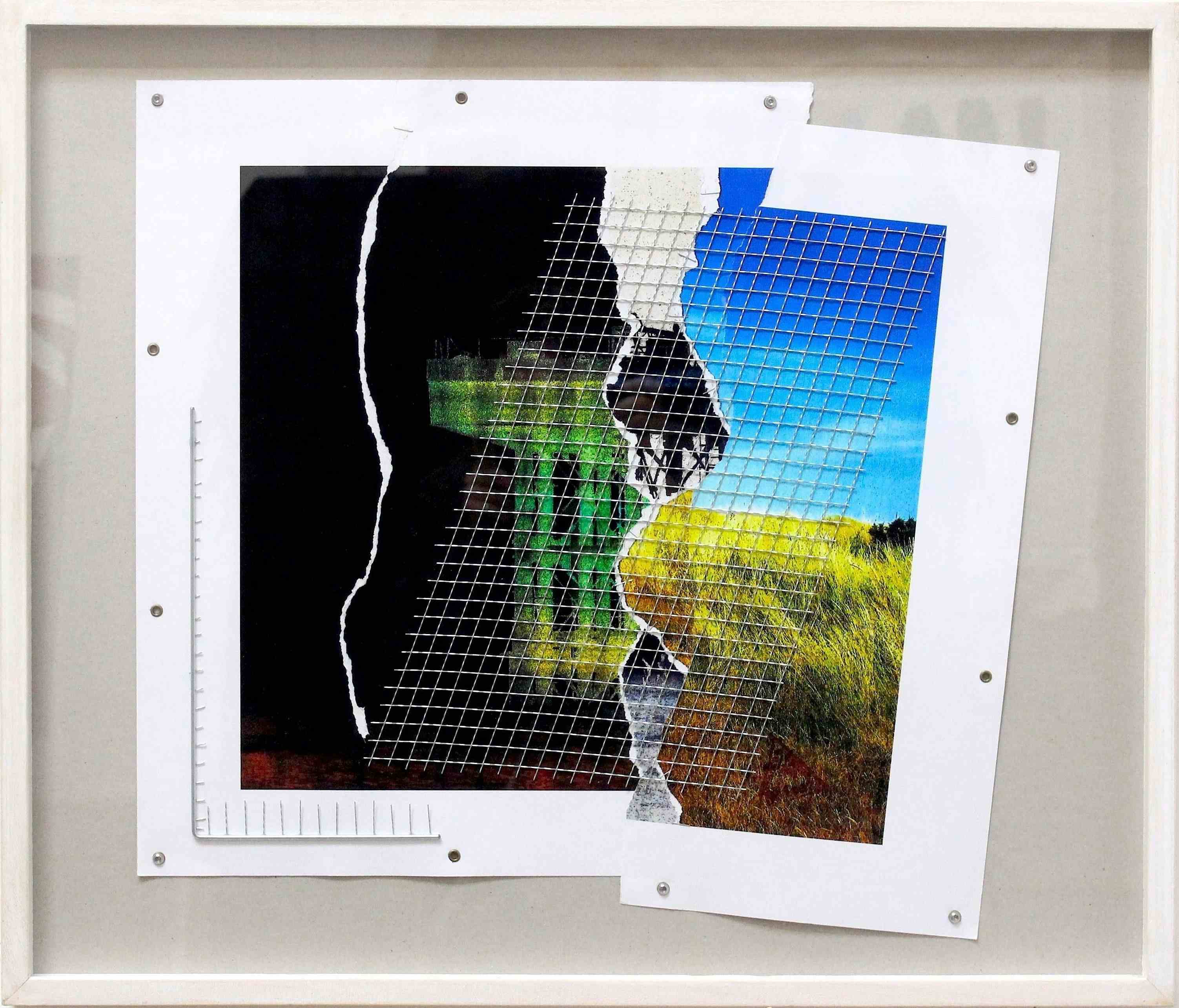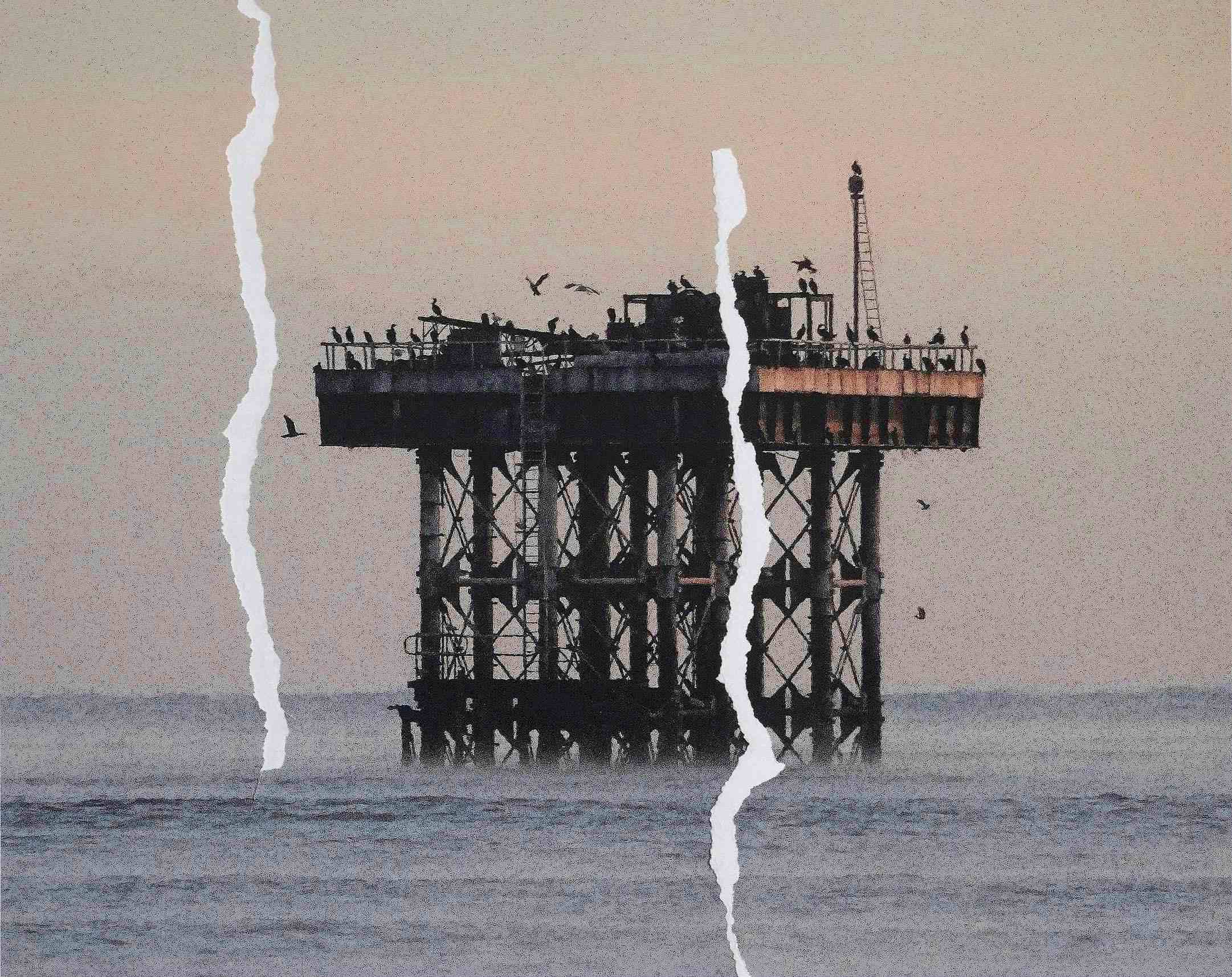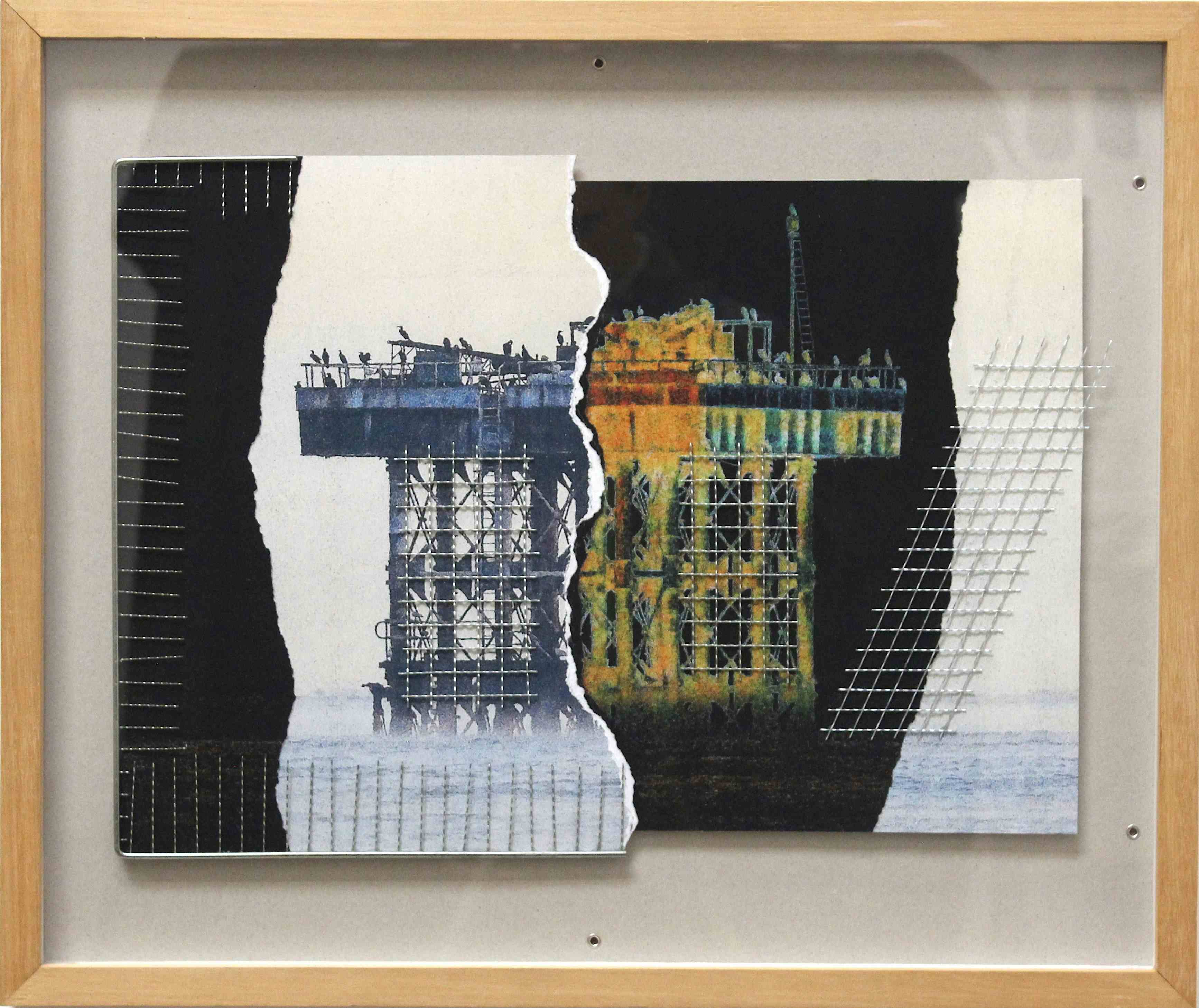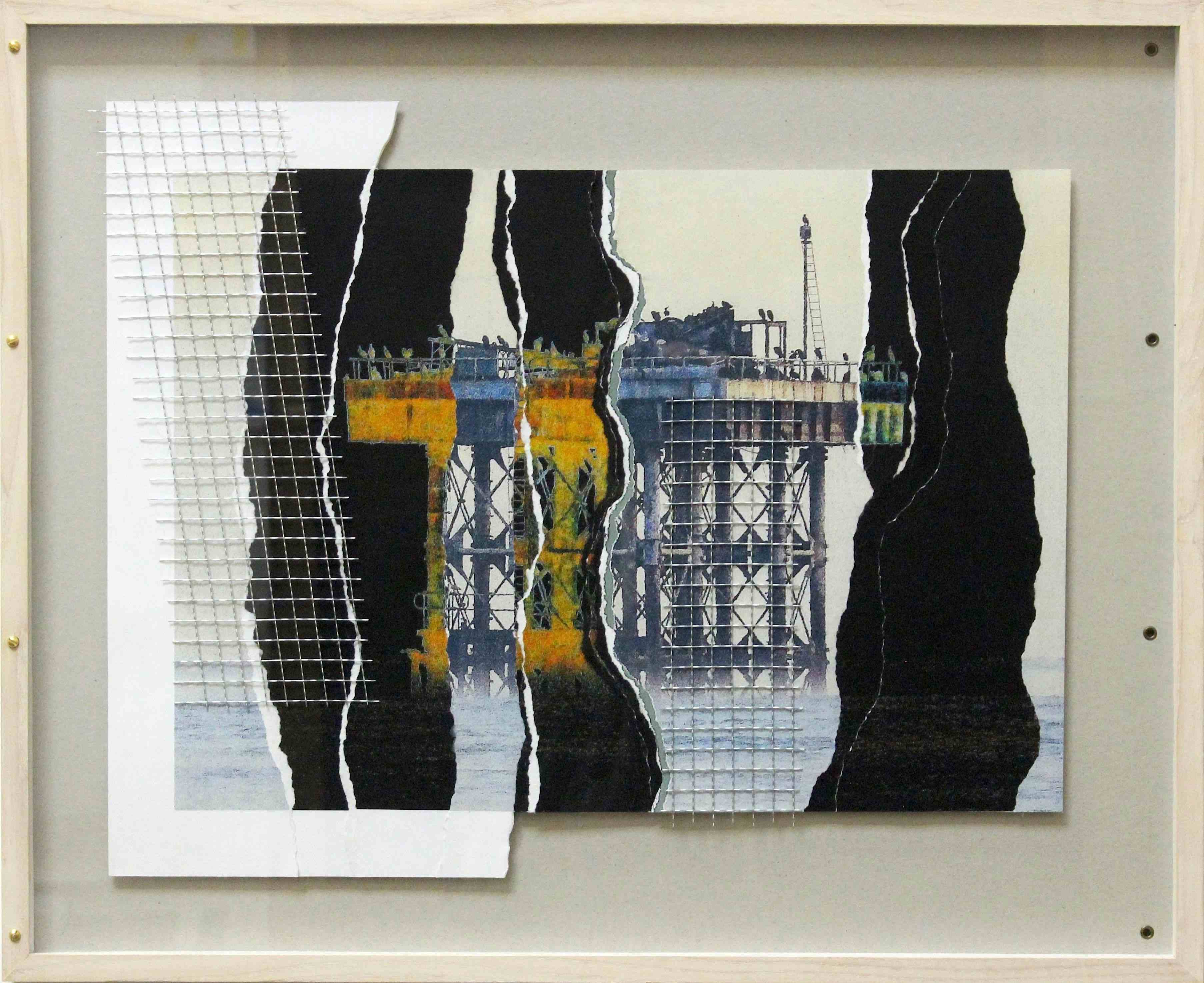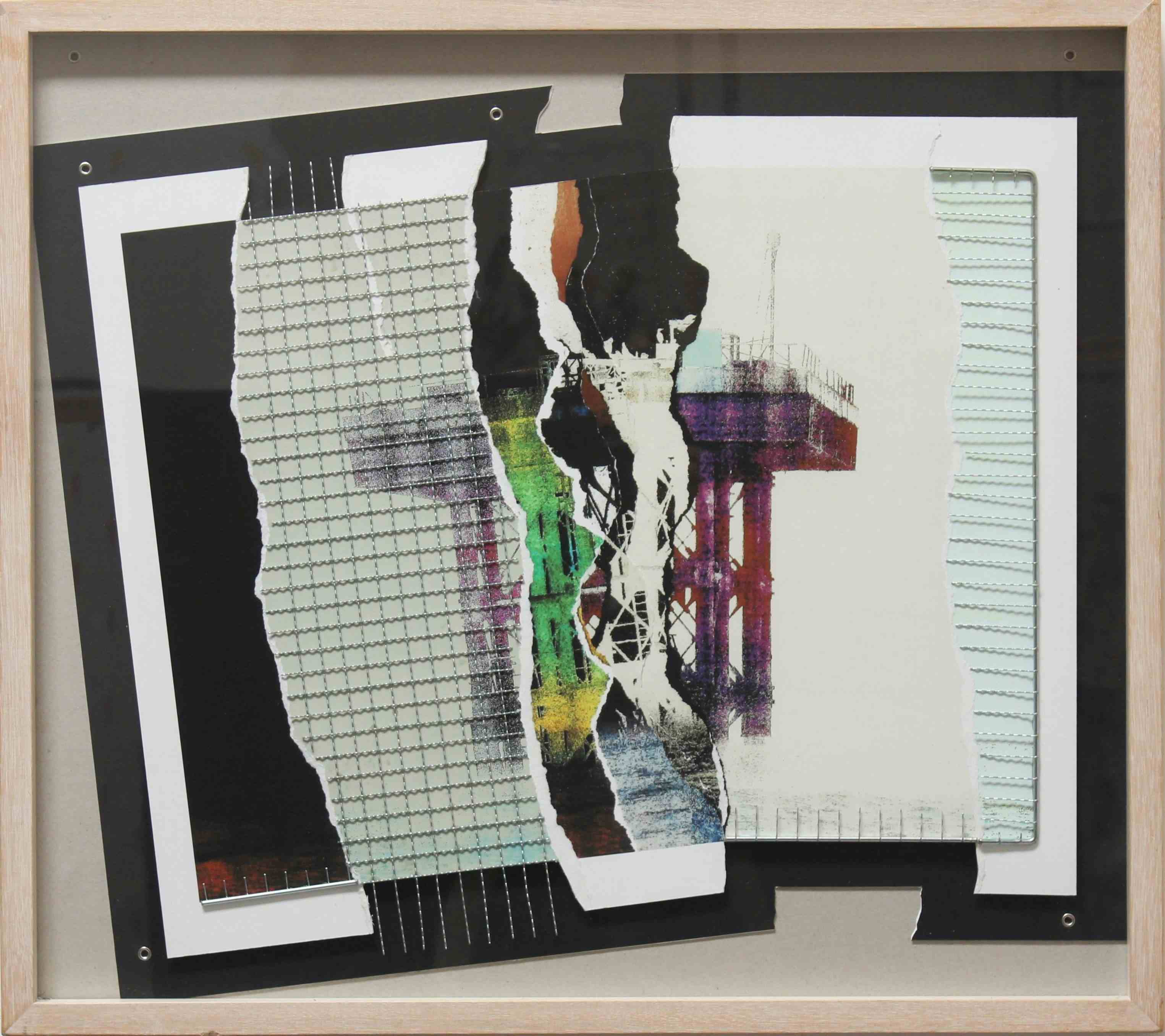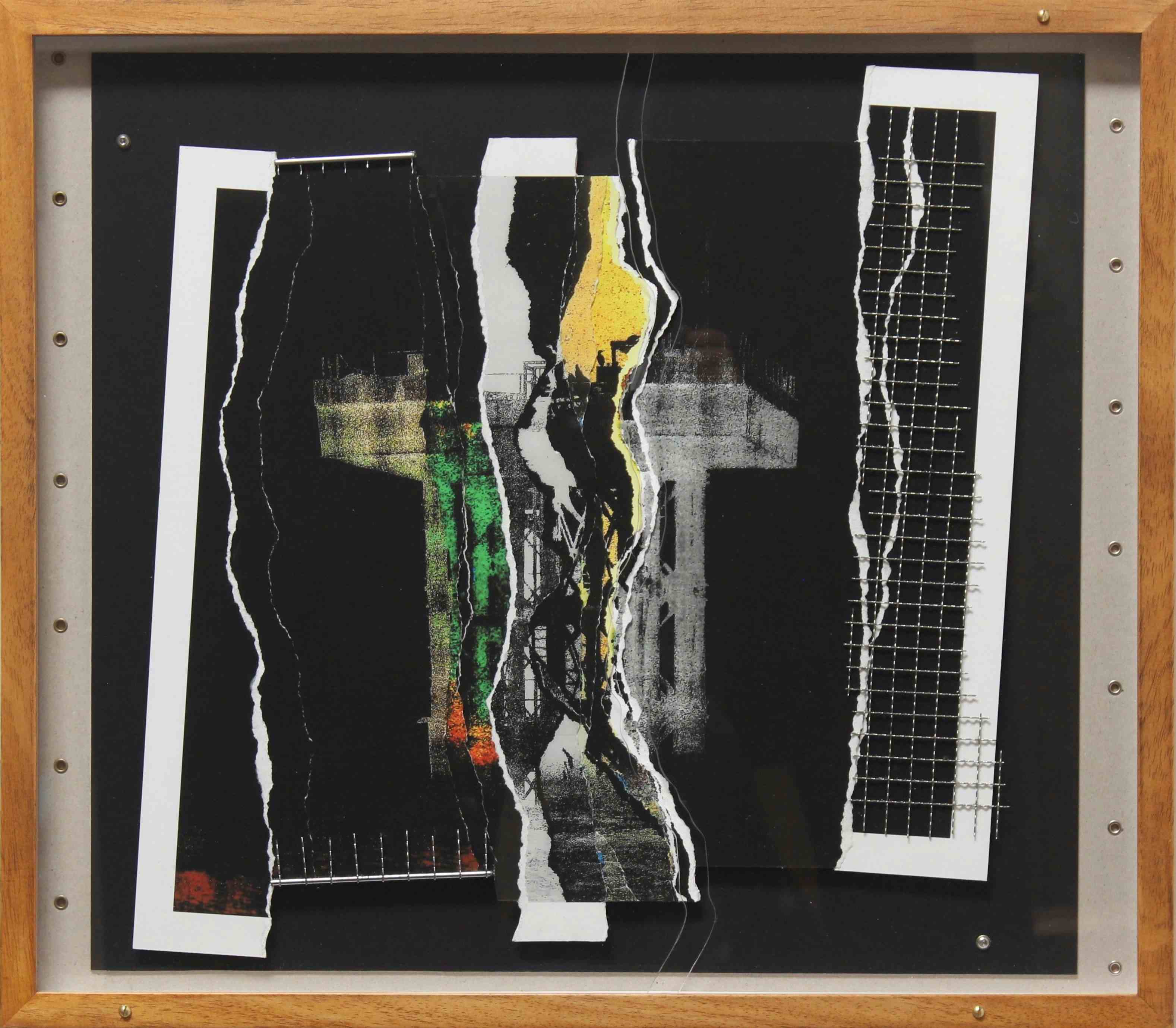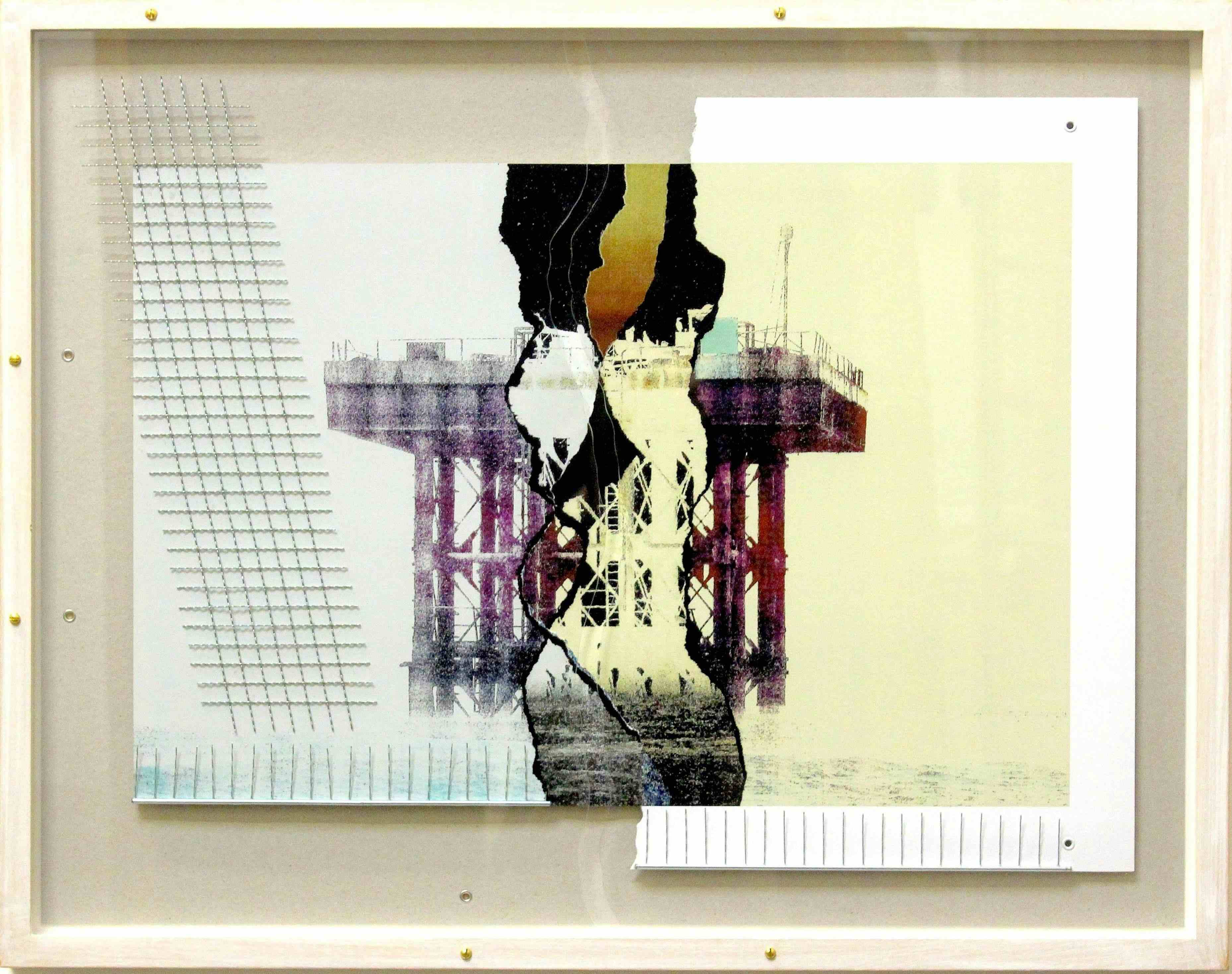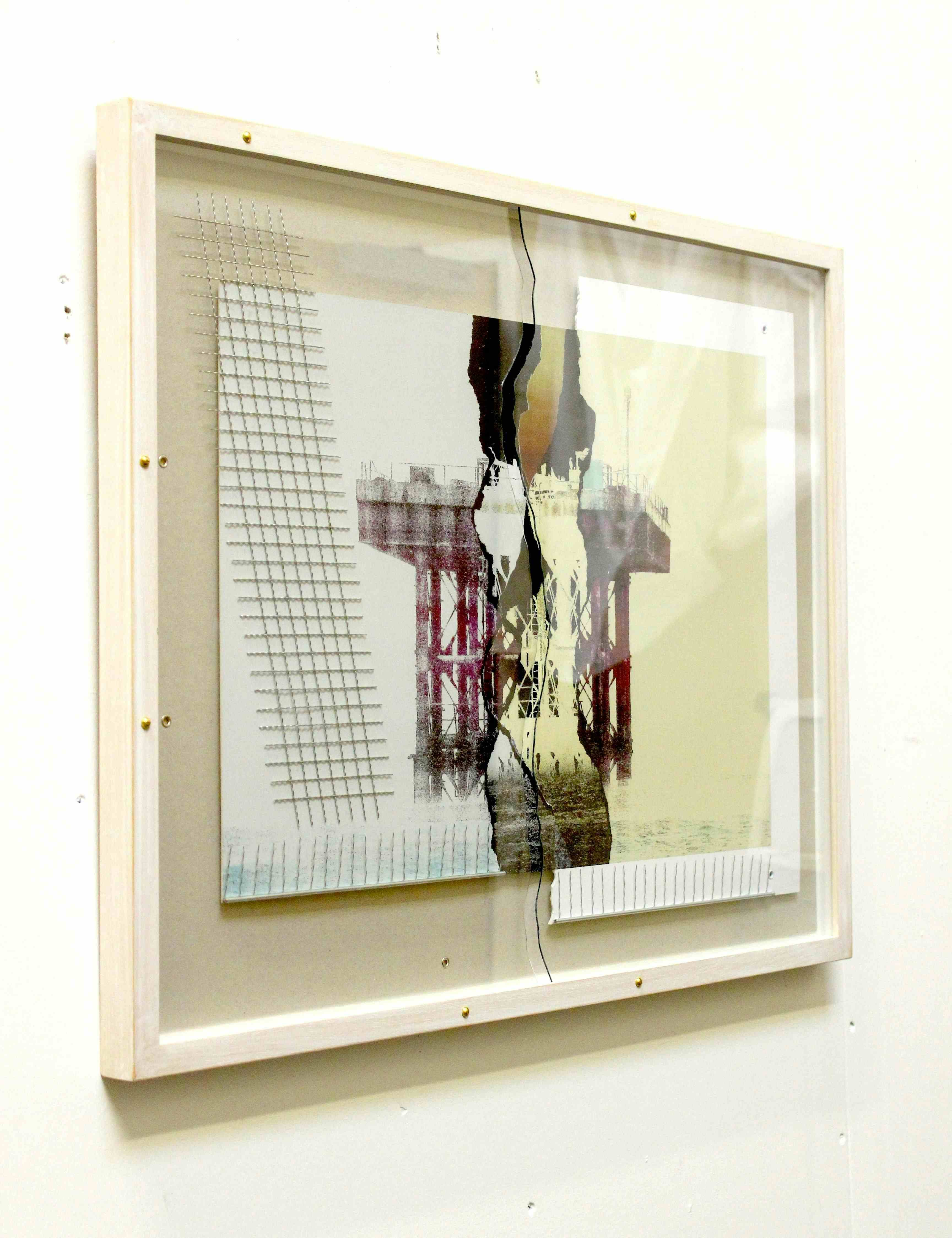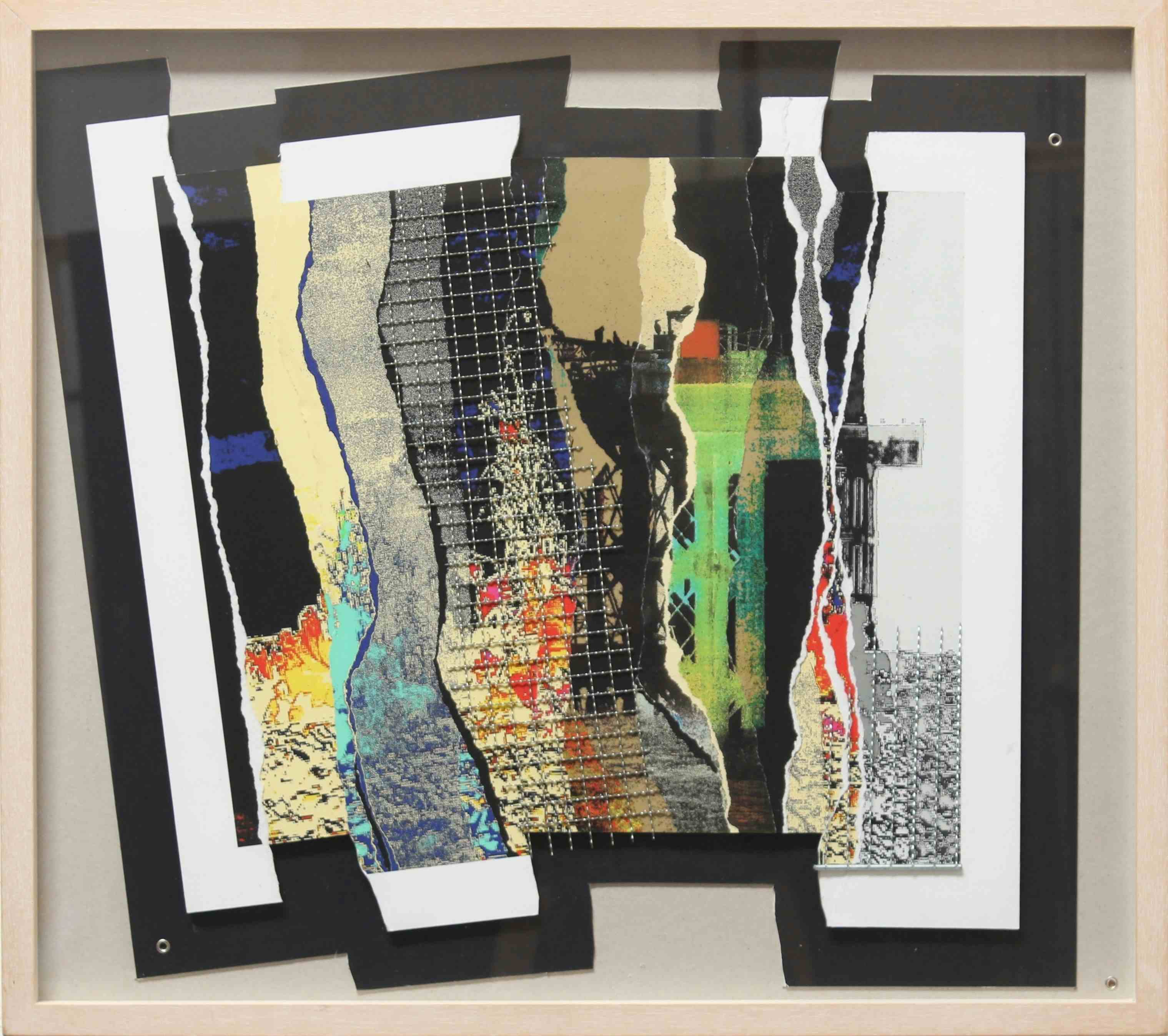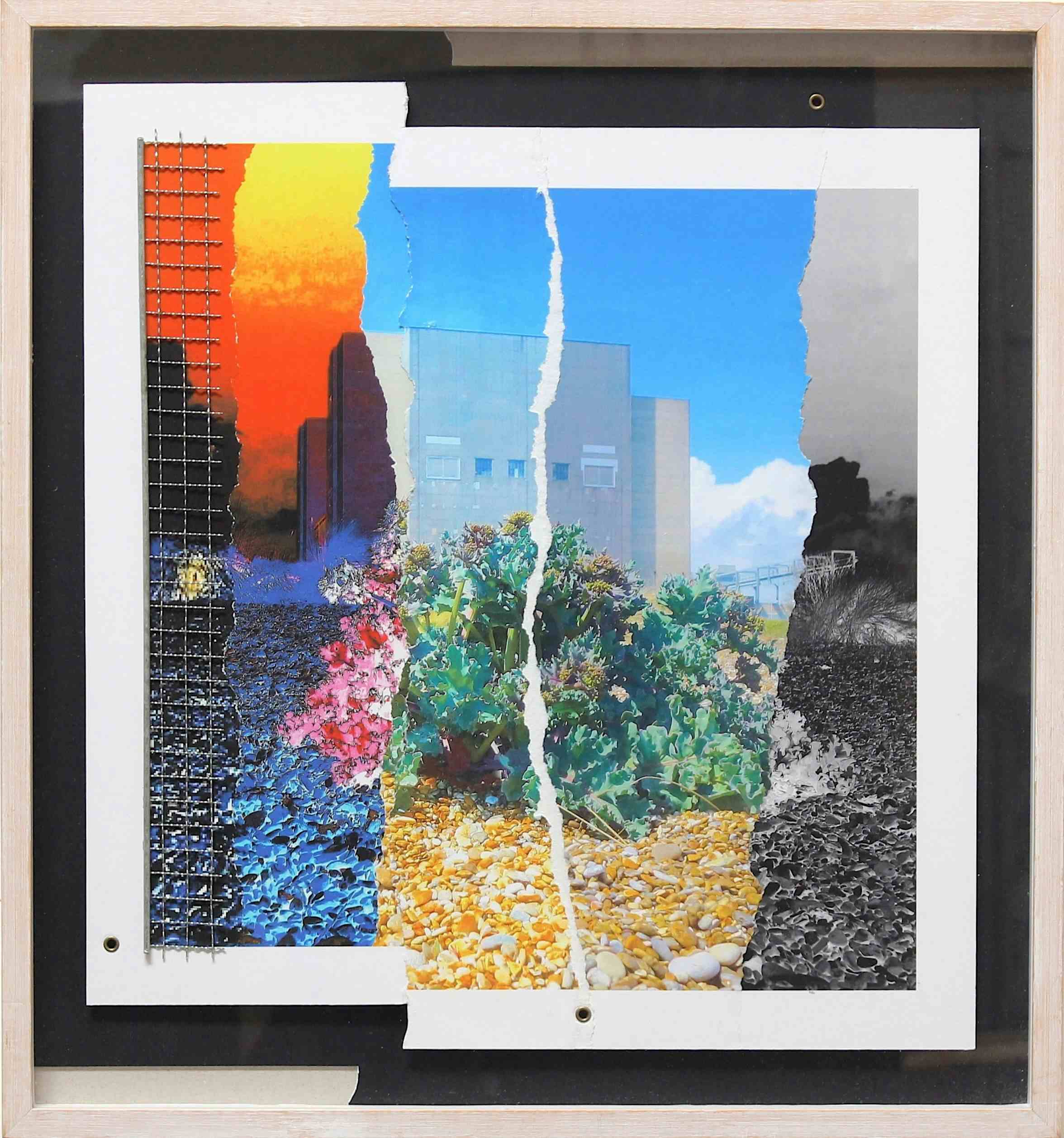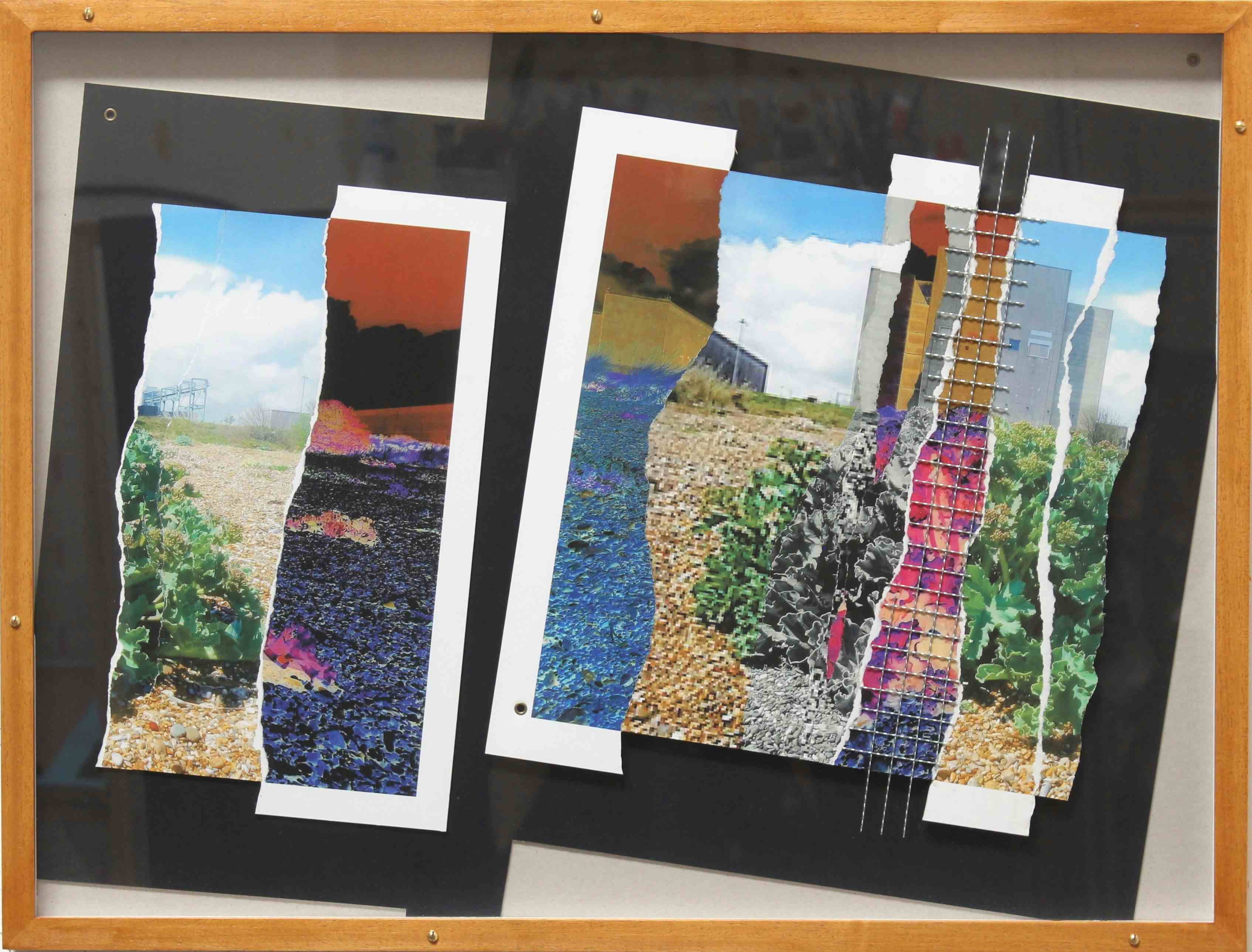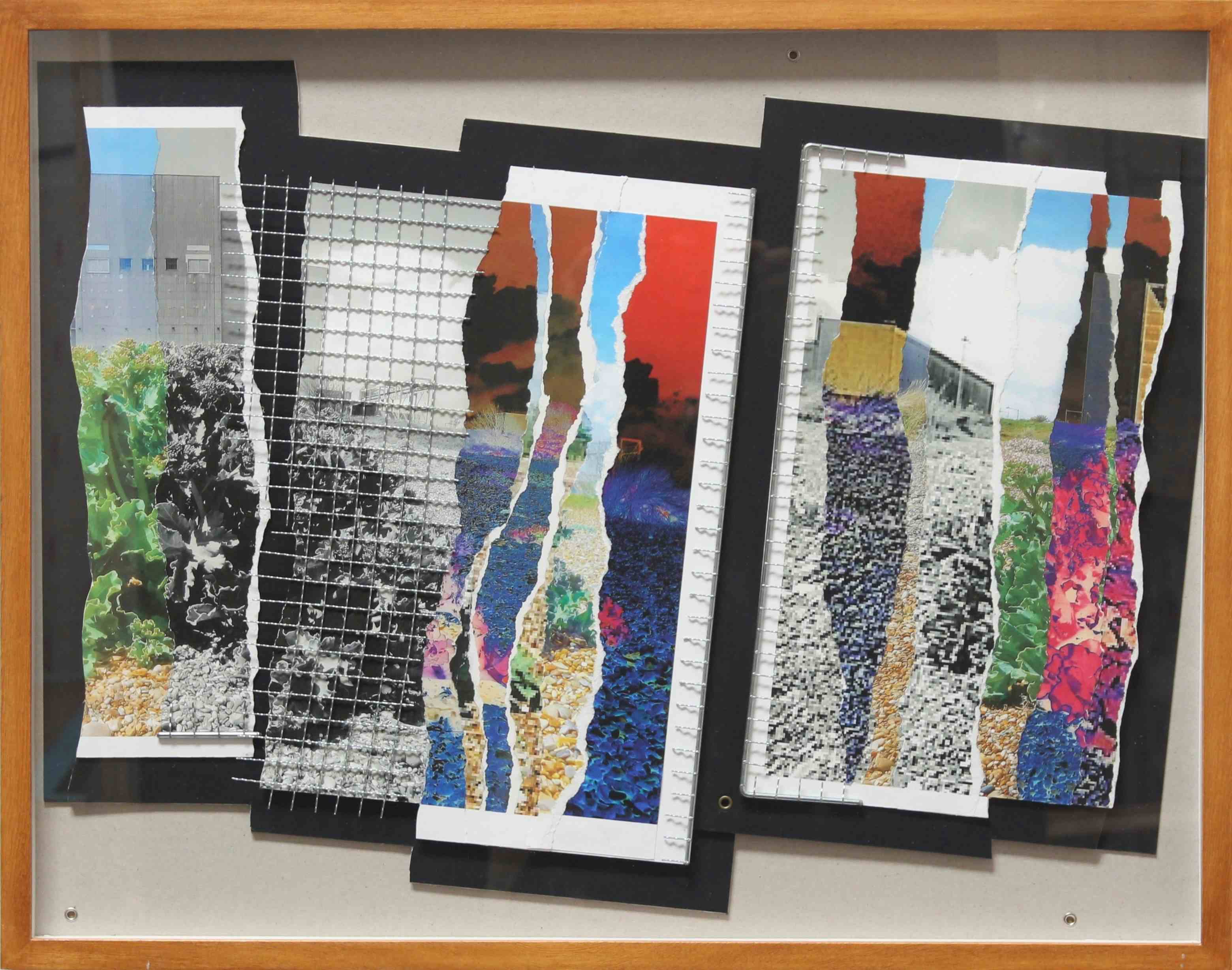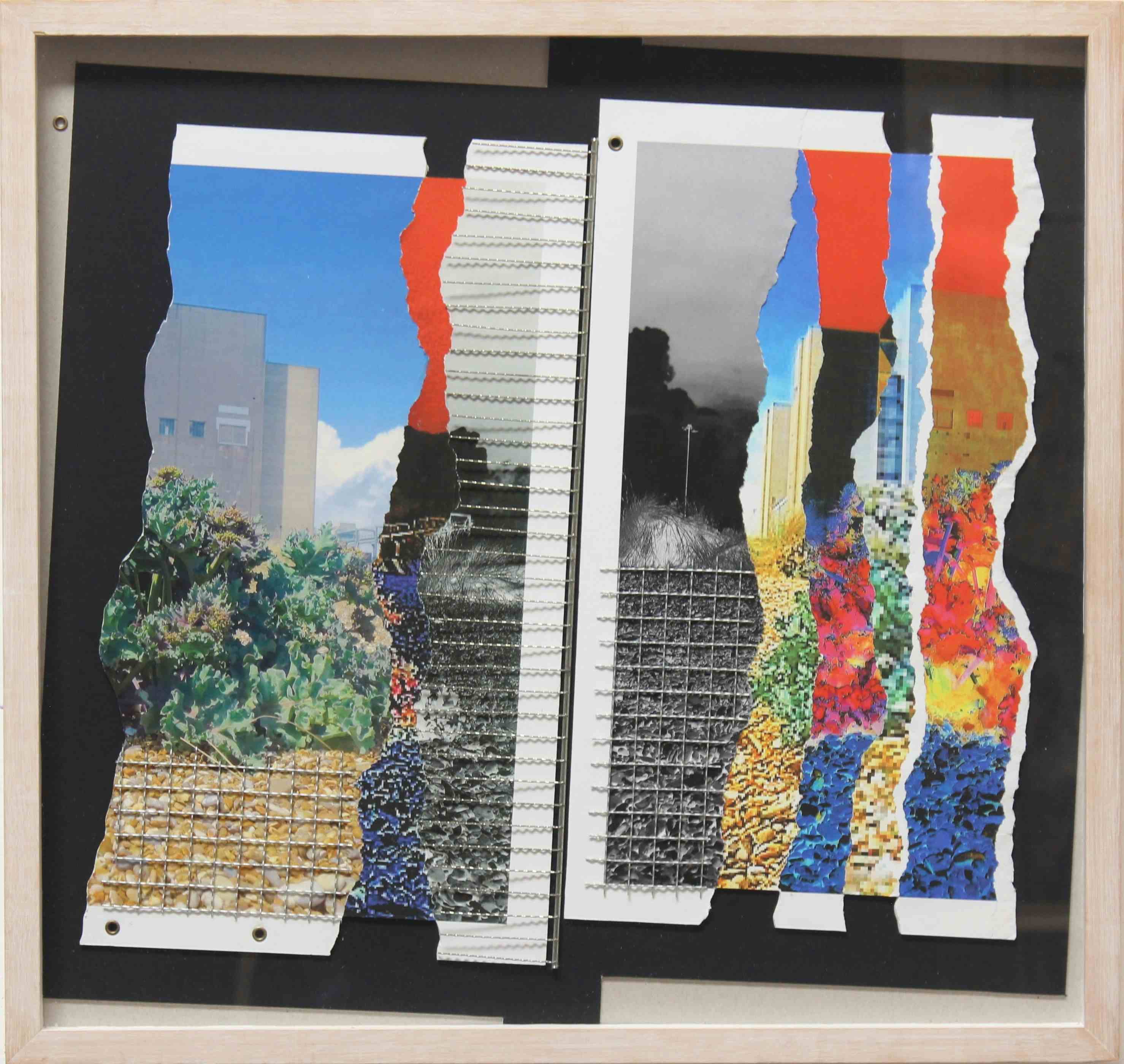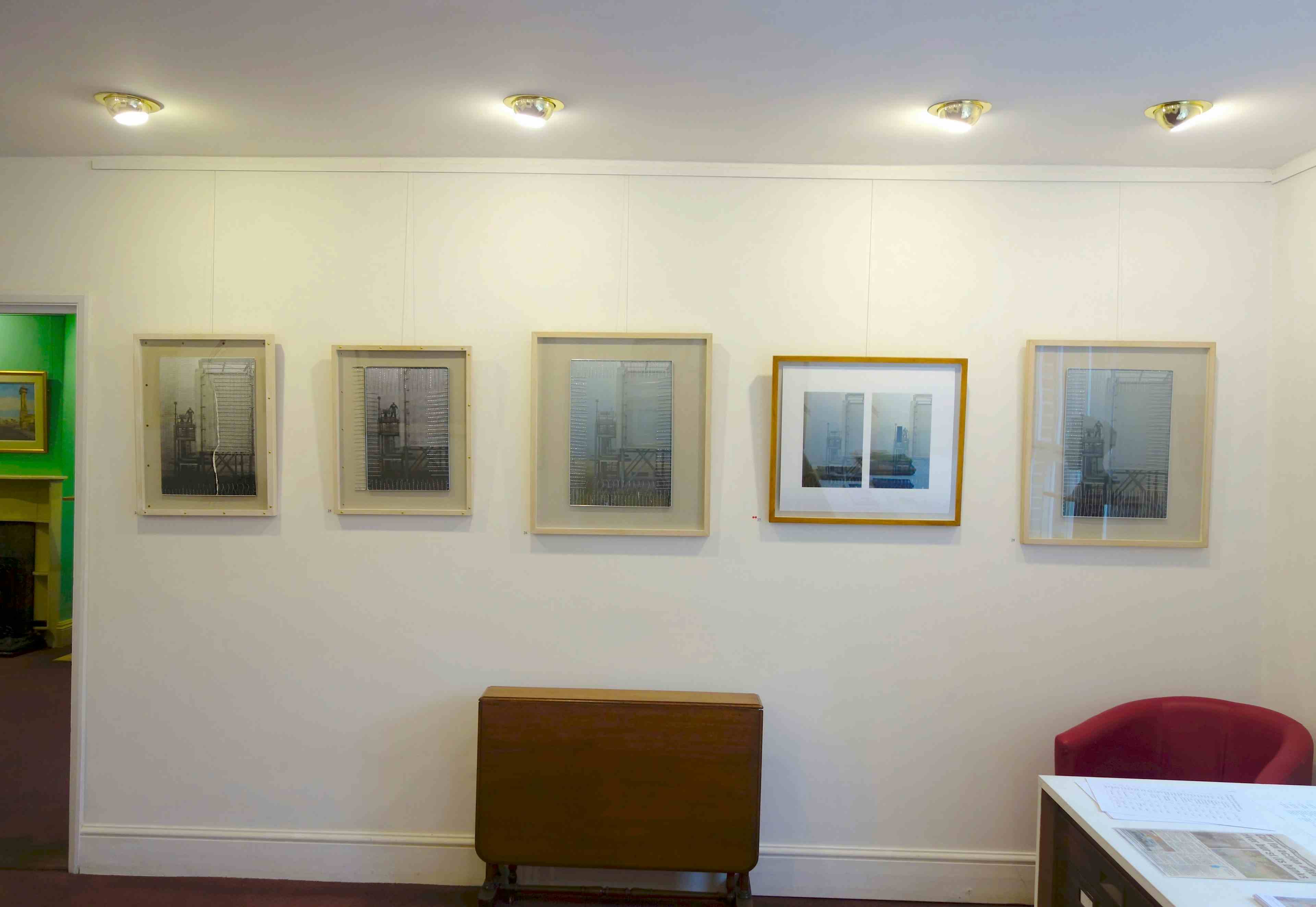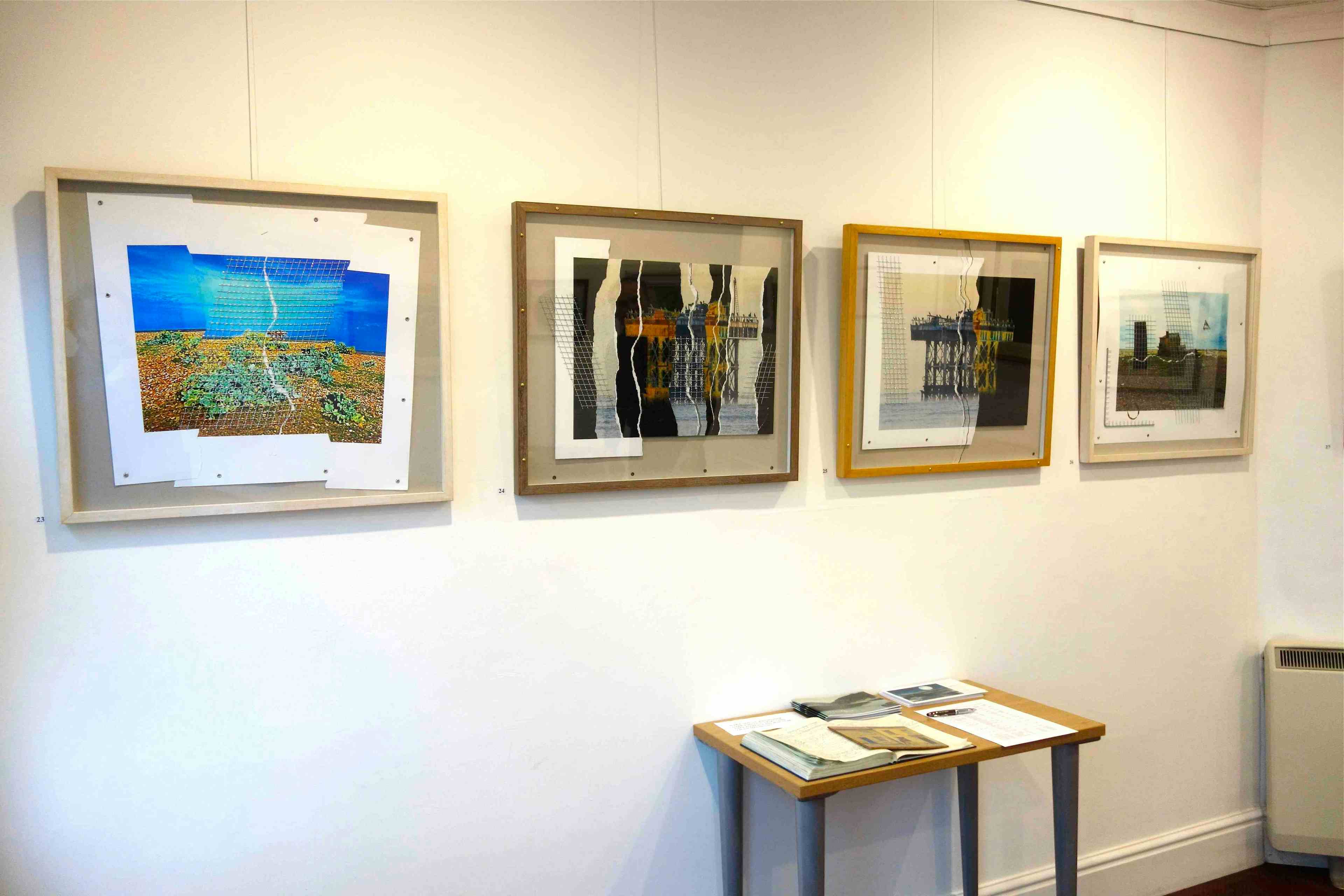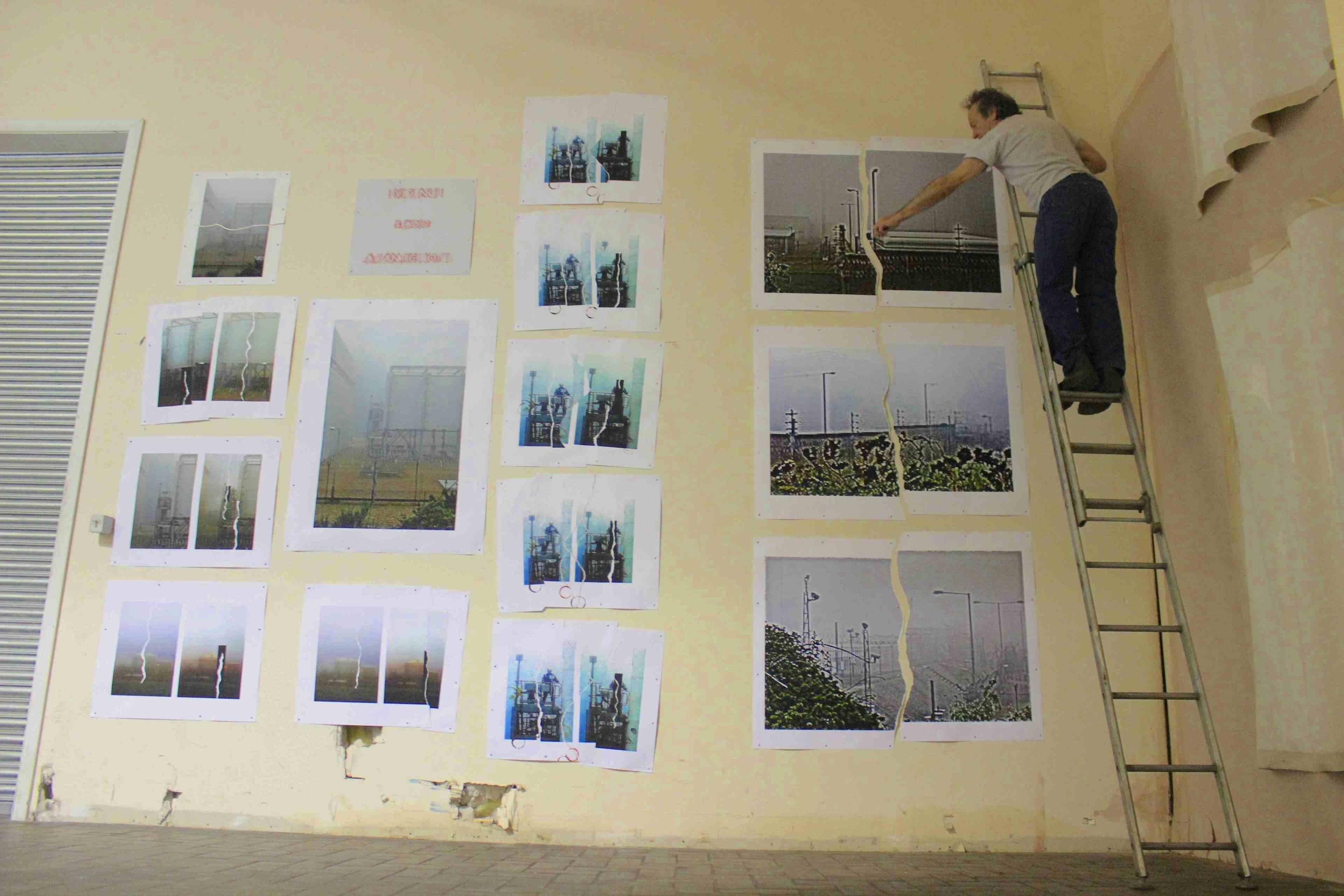I started photographing Sizewell in 2014. I found the visual juxtaposition of the nuclear power stations and the vegetation growing from the shingle on the beach intriguing and could not have been more extreme. I decided to visit regularly.
I have always questioned what constitutes a photograph. My earlier works were concerned with liberating the still photographic image from the single moment and static viewpoint.
The formal aim of the Sizewell project was to give the photographs physical presence and object status; to make them operate in the here-and-now and not simply be historical documents.
One of the most direct ways to achieve this was to tear the photographs. This made it evident that they were pieces of paper measuring specific dimensions. It helped to counterbalance the illusion the photograph represented.
I wanted to show and emphasise that these photographs had been looked at and vetted before you have seen them. You were not the first to set eyes on them.
The sequence of the paired images is ambiguous. They are not 'before and after' images and it is deliberately unclear what the intention was of putting them in the order you see them; whether above and below or side by side. Pairing requires reading across the surface rather than into the photograph.
During the years of the progression of the project concerns of broader social significance came to the fore. Issues of deception and censorship became prevalent. The Sizewell pieces became metaphors for this awareness.
A variety of interventions evolved in the making of these works. Eventually, the photograph comprised the image, tears, wire mesh, staples, sticky tape, coffee cup stains, eyelets, screws, finger prints and censorship stamps. The frame and mount became active components too. Eyelets were punched into the card and screws were put into the surface and edges of the frames to take the eye around the entire object. Finally, even the glass was 'torn' following the line of the torn paper beneath. You couldn't ignore the glass or easily look through it. Nothing was passive. On a formal level they question the nature of the photographic image and how it is read. It would be an error to label them 'mixed media'.
The impact Sizewell C will have on the area of heath and coast will be significant. These photographs are not intended to be a comment on the future. They are not easy on the eye. They are not soothing landscapes or atmospheric seascapes. They can't be. More than a century ago painters depicted destroyed landscapes during the first world war. There is a precedent for uneasy landscapes in the history of British art.
